The Ultimate Guide to Cycling Italy
Plan your ultimate cycling holiday in Italy with this all-in-one guide to the best routes, local flavors, travel tips, and must-see sights.
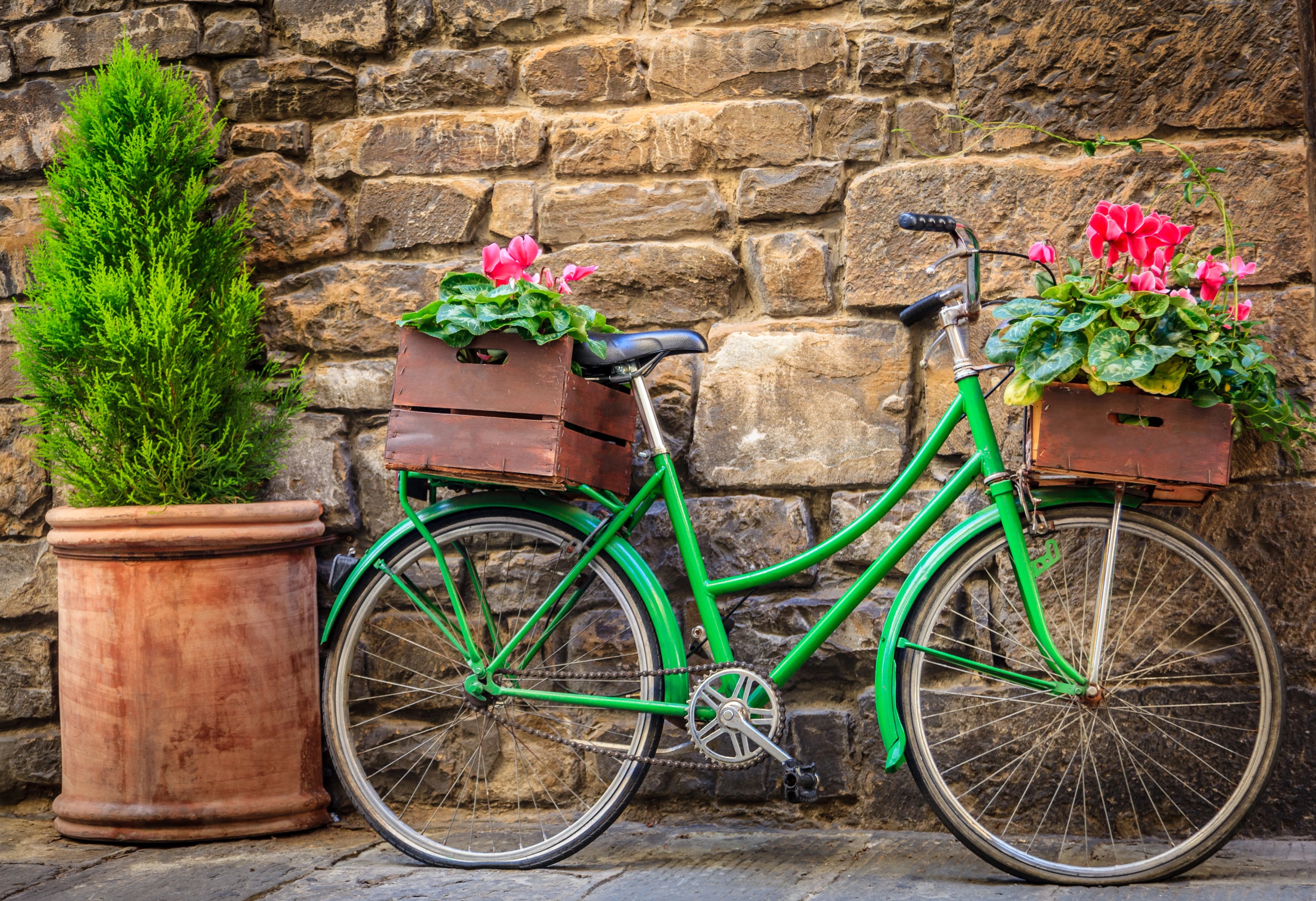
Quick links
Did you know Italy has over 200,000 km of cycling routes, 61 UNESCO World Heritage Sites, and a cycling culture that dates back more than a century?
From alpine passes in the Dolomites to vineyard roads in Tuscany and seaside rides in Puglia — there’s no better way to experience the country than riding a bike.
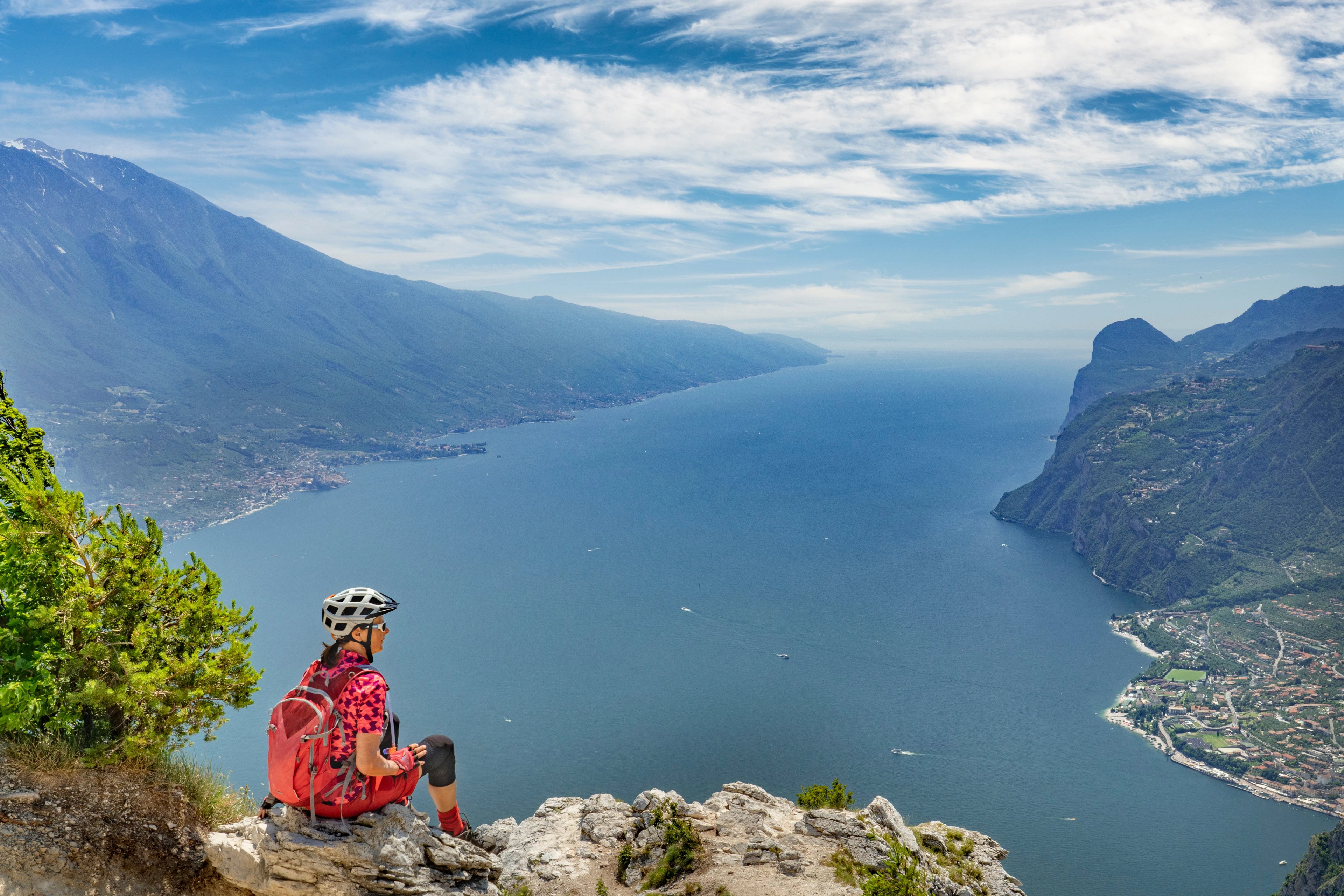
This guide will help you plan the perfect cycling holiday in Italy.
Inside, you’ll find:
- The best time to cycle in Italy
- Italy's best cycling routes
- Cycling events
- Must-see places
- Cycling rules
- Plenty of travel tips
- And much more
Think of this as your starting point for everything related to cycling Italy.
Let’s ride Italy - Andiamo!
What Makes Italy the Perfect Cycling Destination
Cycling Italy combines world-class routes, reliable weather, and excellent cycling infrastructure, ranging from mountain passes in the Dolomites to cypress-lined roads in Tuscany and coastal rides in Sicily.
Add in 61 UNESCO World Heritage Sites, outstanding food, and a population that truly lives and breathes cycling, and it’s easy to see why Italy is a top choice for riders from around the world.

But to make it brief, here are top 10 reasons to cycle in italy:
- Year-round riding – Thanks to its varied geography, there’s always a perfect region in season.
- Endless variety – Alpine passes, vineyard valleys, lakes, and sea views — all in one country.
- Over 200,000 km of cycling routes – Well-marked roads, scenic gravel trails, and dedicated paths.
- Legendary climbs – Take on Giro d’Italia icons like Stelvio, Gavia, and Sella.
- UNESCO heritage everywhere – with 61 sites, it’s the country with most UNESCO-protected listings.
- A true cycling culture – Italians live and breathe the sport — from village rides to pro races.
- Culinary heaven – Every ride ends with handmade pasta, regional wine, and espresso.
- Easy access – Fly in, hop on a train, and start pedaling — Italy is made for travelers.
- For all levels – Leisure, pro-racing, gravel, or road — Italy has routes for every type of rider.
- Passion and soul – Cycling in Italy isn’t just about distance — it’s about connection, rhythm, and joy.
Read the full article on why Italy is the must-ride destination for in-depth insights, photos, and detailed examples of top routes.
When to Ride
Cycling Italy is possible all year — but the best time depends on where you ride.
The country’s north–south stretch and diverse geography mean conditions shift dramatically from alpine peaks to coastal plains. With a little planning, you can find perfect riding weather somewhere in Italy every month of the year.
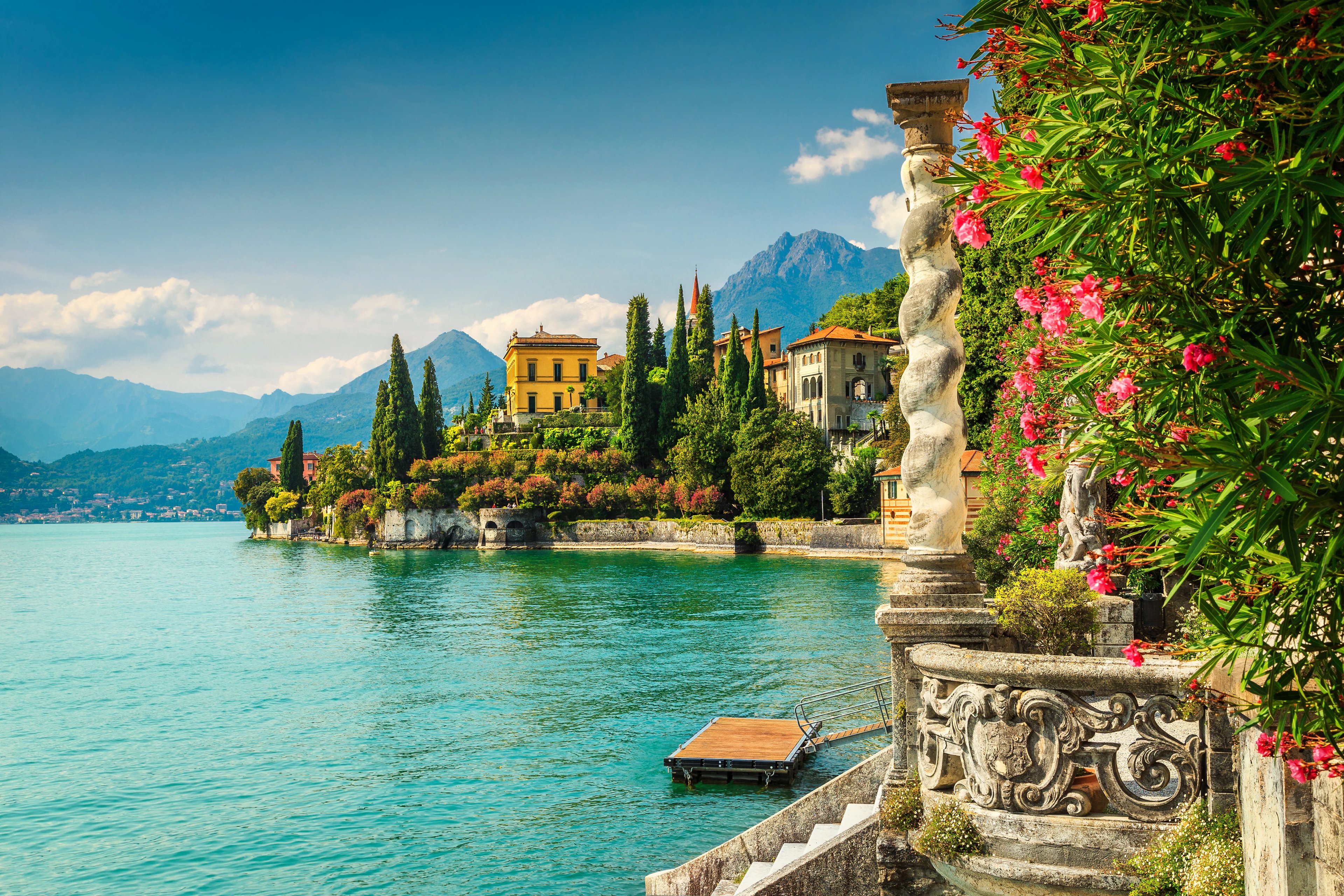
At a glance:
- Spring (March–May): Mild and green — ideal for Tuscany, Veneto, and Puglia as the mountains reopen.
- Summer (June–August): Best for the Dolomites and Alps; hot and crowded in the south.
- Autumn (September–October): Warm, golden, and calm — perfect for vineyards and lake regions.
- Winter (November–February): Cold in the north, but Sicily and Sardinia stay mild and rideable.
Regional Highlights
- Dolomites & Alps: June–September offers open passes, cooler air, and iconic Giro climbs.
- Tuscany & Umbria: April–June and September–October are best for rolling countryside rides.
- Puglia & the South: Spring and autumn bring comfortable temperatures and quiet roads.
- Sicily & Sardinia: Ride year-round, with spring and autumn being ideal.
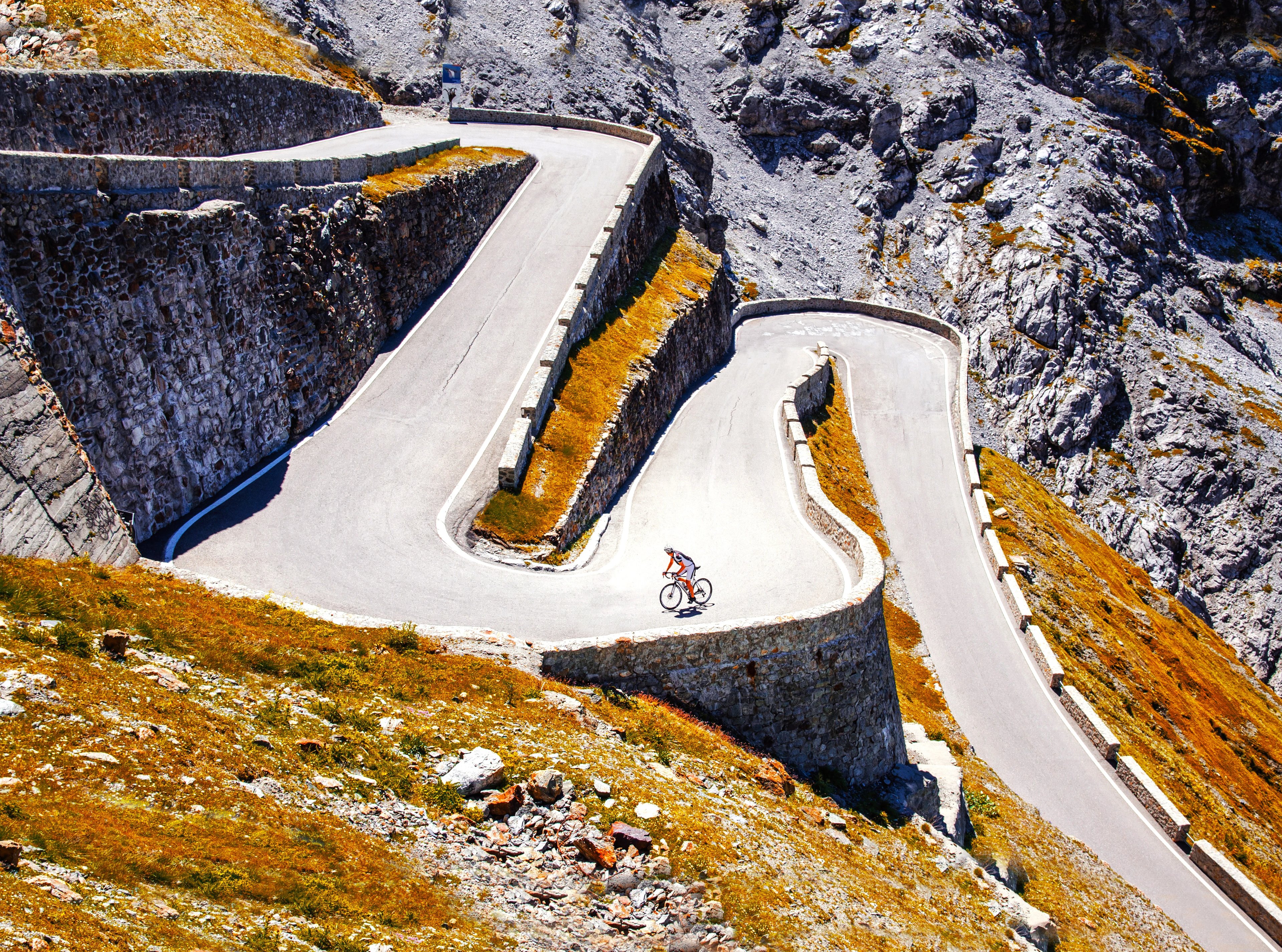
Italy’s climate gives cyclists unmatched flexibility — whether you prefer summer ascents in the Dolomites or spring rides through Tuscan vineyards, there’s always a region in season.
For detailed month-by-month conditions and pro tips for each region check here.
Best Cycling Routes Italy
Discover Italy’s top cycling regions — from Alpine climbs to coastal escapes and vineyard valleys.
Italy’s cycling network stretches across over 90,000 km of mapped routes, offering every type of ride imaginable.
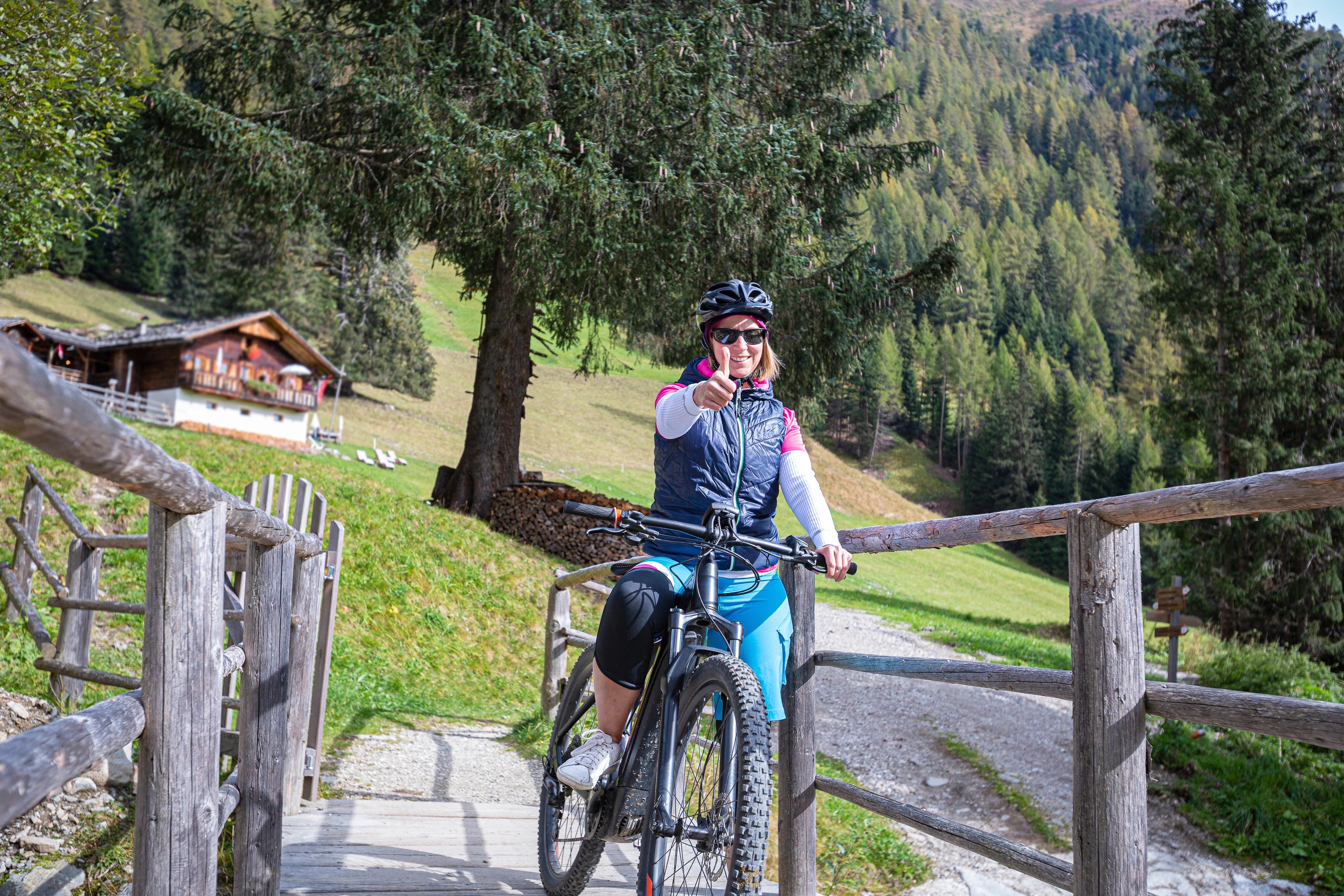
Our favorite cycling regions in Italy include:
- Dolomites cycling routes – Epic climbs and dramatic landscapes; ideal for experienced riders and road cycling enthusiasts.
- Lake Garda & Como – Gentle routes, lake circuits, and panoramic roads perfect for leisure cycling and e-bikes.
- Tuscany cycling routes – Rolling hills, “strade bianche” gravel roads, and UNESCO-listed towns; the heart of Italy’s cycling culture.
- Puglia – Coastal roads, olive groves, and whitewashed villages — best for relaxed rides and warm-weather touring.
- Veneto – Smooth rides through vineyards, art cities, and the Dolomite foothills; great for moderate cyclists.
- Sicily & Sardinia – Quiet roads, rugged coastlines, and Mediterranean sun — perfect for adventure cyclists.
- Piedmont – Wine-country loops, gourmet stops, and peaceful backroads through Langhe and Monferrato hills.
When in Italy, it’s hard to decide where to go — every region has its own character and rhythm. See what sets each cycling region apart and find your next unforgettable route.
Planning Your Itinerary
It’s hard to limit your stay in Italy — every region feels like a destination of its own. That’s why our cycling tours in Italy come in different lengths, ranging from 4 to 15 days.
How to Plan Your Trip
- Choose your region – Match your interests and fitness level with the right terrain: Tuscany and Puglia for rolling countryside, Dolomites for alpine climbs, or Sicily for coastal rides. See the most popular cycling routes in Italy.
- Set your distance and duration – Most cyclists ride 40–80 km per day, depending on elevation and stops. Plan at least 5–7 days to fully enjoy each region.
Short on time?
Planning a longer cycling adventure? This multi-country adventure is perfect to make the most of your time on the bike!
- Pick your tour style:
- Self-guided: Ride independently with GPS routes and luggage transfers.
- Guided: Join a small group with local guides and van support.
- Center-based: Stay in one location and do daily loop rides.
- Plan for rest and exploration – Schedule rest days to visit historic towns, local wineries, or UNESCO sites along your route.
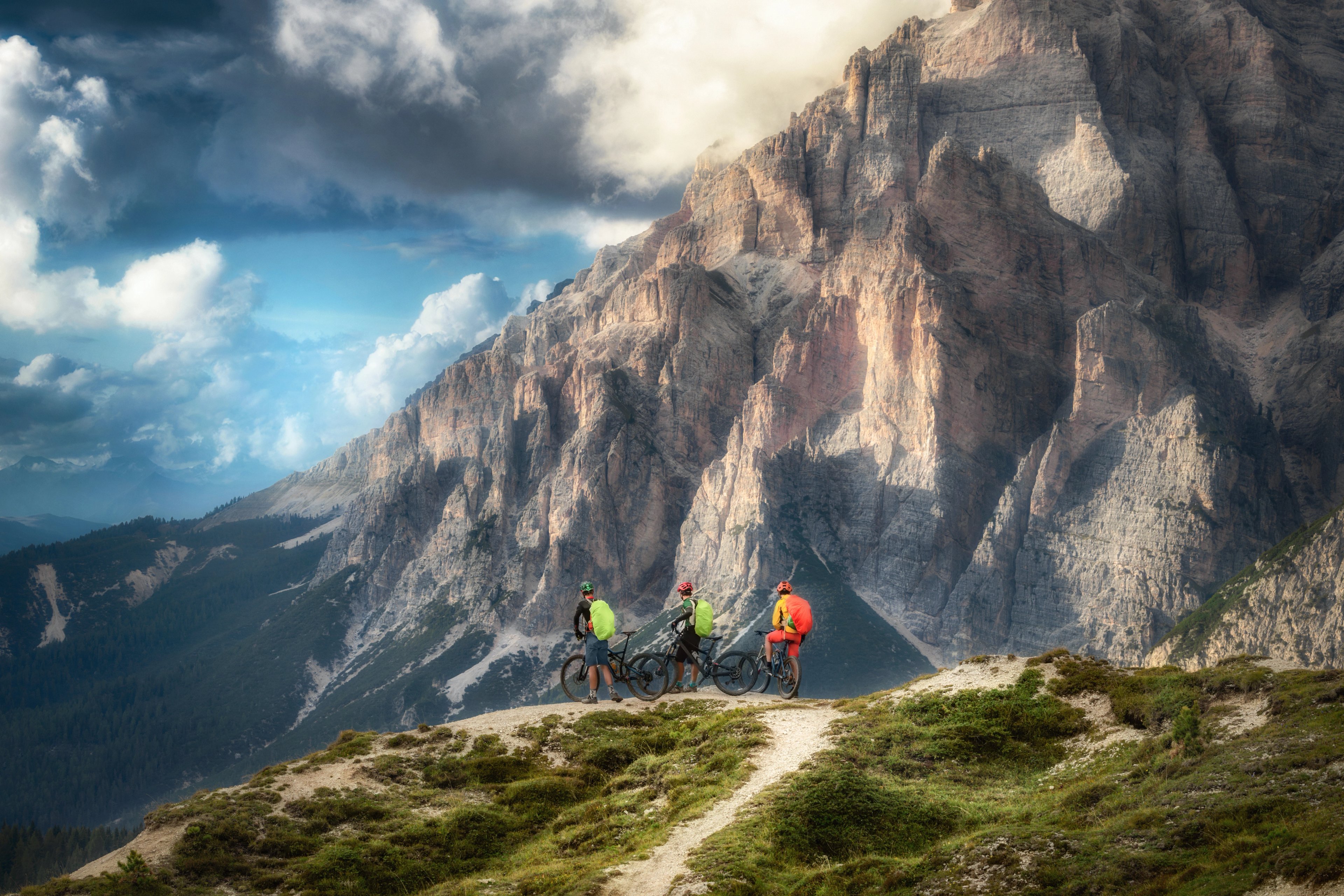
If you’d like to combine active cycling with leisurely exploration, take a look at our Italy Tours. These itineraries focus on the cultural side of the country, showcasing Italy’s must-see landmarks and hidden gems by region.
Find planning overwhelming? Our travel team knows Italy inside out and can help you:
- Plan your active cycling days with detailed GPS routes and insider tips
- Book hand-picked accommodation that fits your comfort level
- Organize cultural experiences off the bike so you don’t miss a thing
- Take care of all logistics, from luggage transfers to local support
We make it easy to turn your dream of a cycling holiday in Italy into reality. Simply reach out, tell us your dates, and we’ll take care of the rest.
What to Expect Each Day on a Self-Guided Tour in Italy
Morning: Gear Up & Ride Out
On Day 1, you’ll get your bike delivered directly to your hotel, prepped and ready to go. You’ll also receive a helmet and any accessories you need.
Breakfast is included every morning, often between 7:00–10:00 AM (earlier in summer helps beat the heat). After fueling up, you’ll set off with your GPS route files and digital guidebook, navigating Italy’s back roads, vineyards, hilltop towns, and scenic byways.
Because routes in Italy can vary from flat lakefront stretches to steep climbs in the Dolomites or Apennines, some mornings may begin with a gradual warm-up. Others might launch you straight into altitude gain — your guidebook will flag steep segments, suggest shortcuts and rest stops.
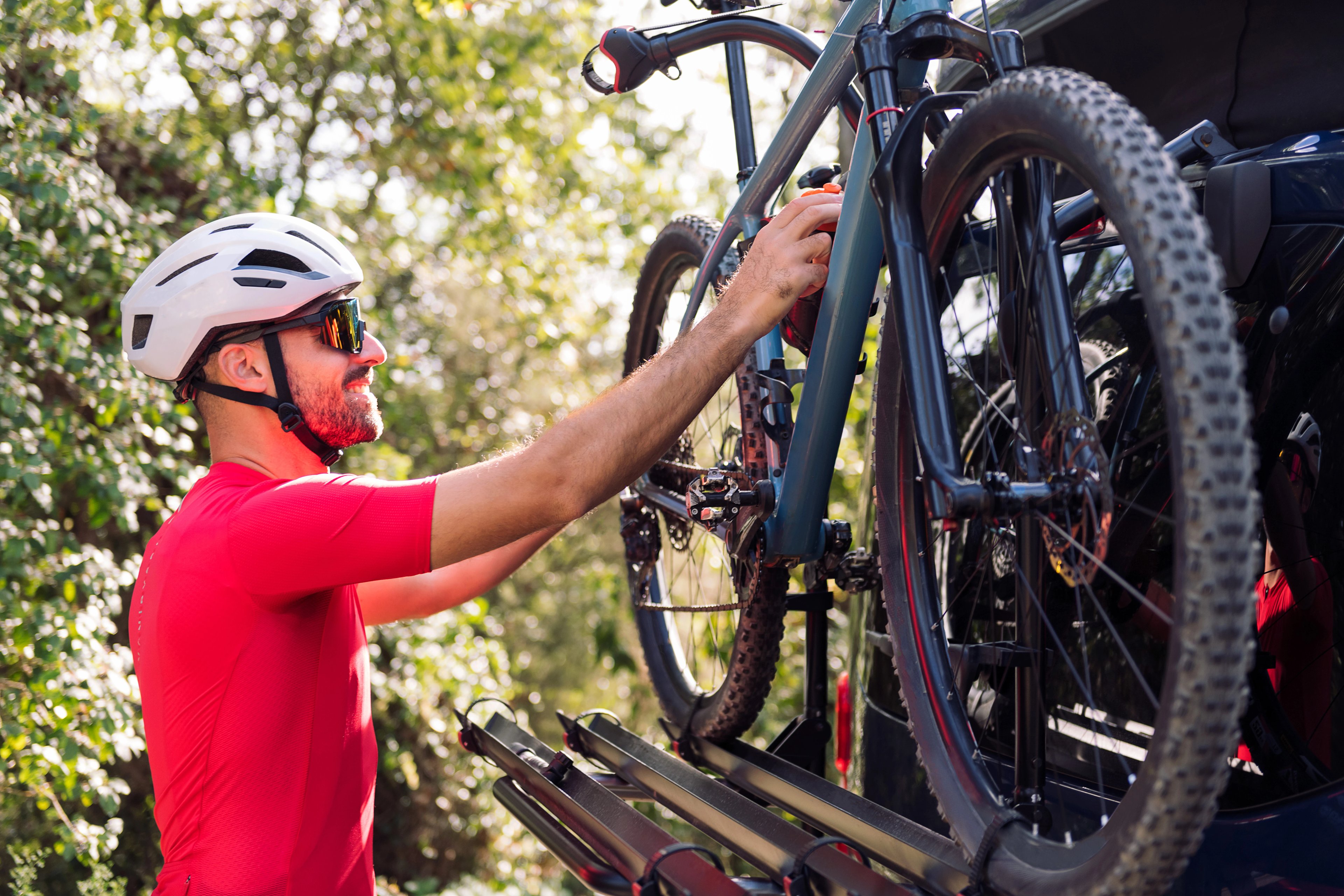
Midday: Ride, Pause, Explore
One of the major advantages of a self-guided tour is flexibility. You decide when to stop, rest, or detour. Our guidebooks and GPX files highlight:
- Scenic viewpoints, olive groves, and hilltop terraces
- Cultural stops: churches, medieval towers, and local wineries
- Recommended cafés and trattorias for a hearty lunch
In Italy, many towns often shut from about 1:00–4:00 PM (“il riposo”), so plan your midday stops accordingly. Even so, countryside cafés and agriturismos offer refreshment along quieter routes.
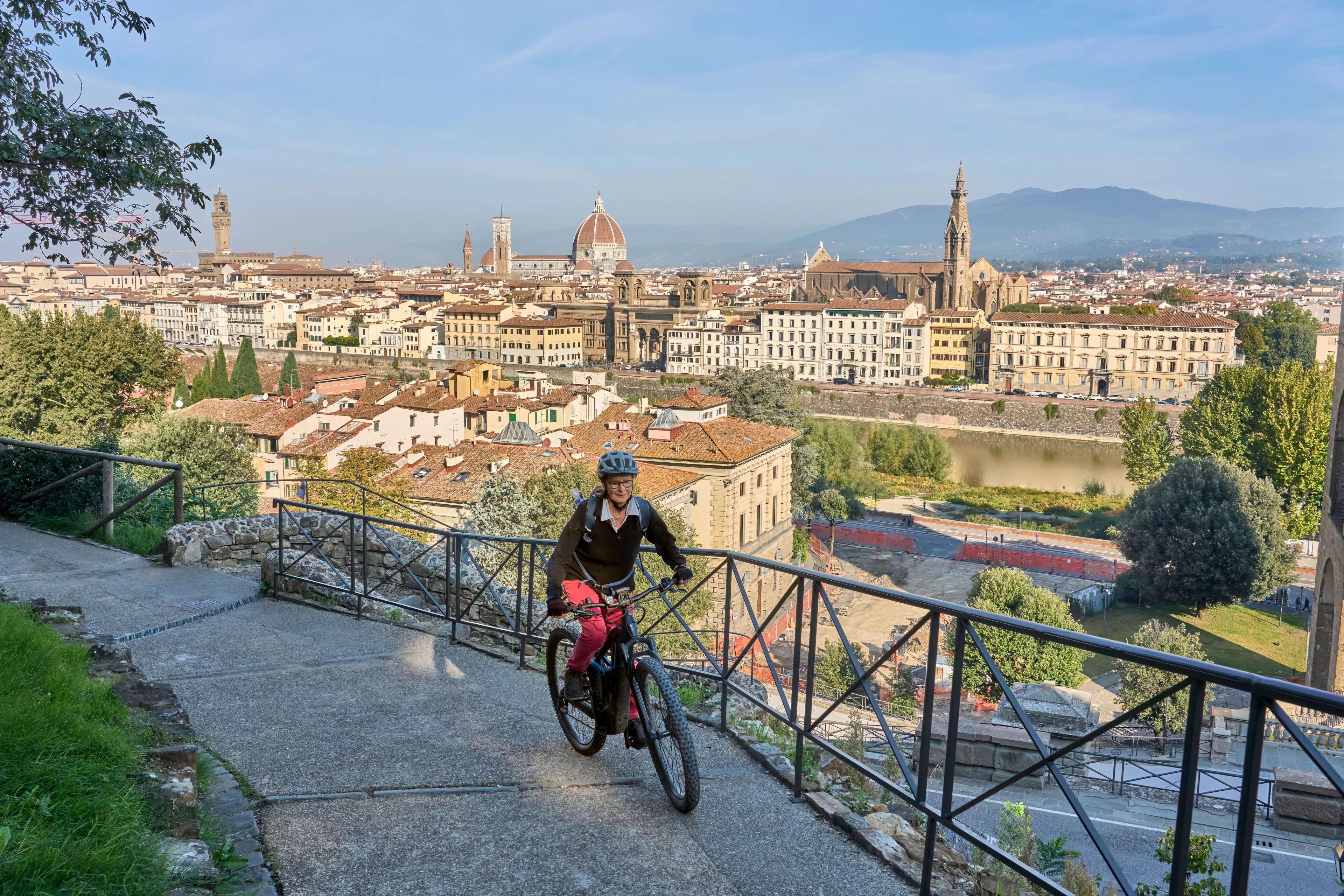
Late Afternoon: Arrival & Relaxation
You’ll generally arrive at your next accommodation in the late afternoon, giving you time to settle in, relax, or explore the local village. Your luggage will already be waiting for you.
Many nights are spent in charming agriturismos, historic guesthouses, or boutique hotels selected for their location, character, and rider-friendly amenities (bike storage, tool kit, drying rooms).
Later, you might stroll through a piazza, visit a small church, or sample local wine or gelato.
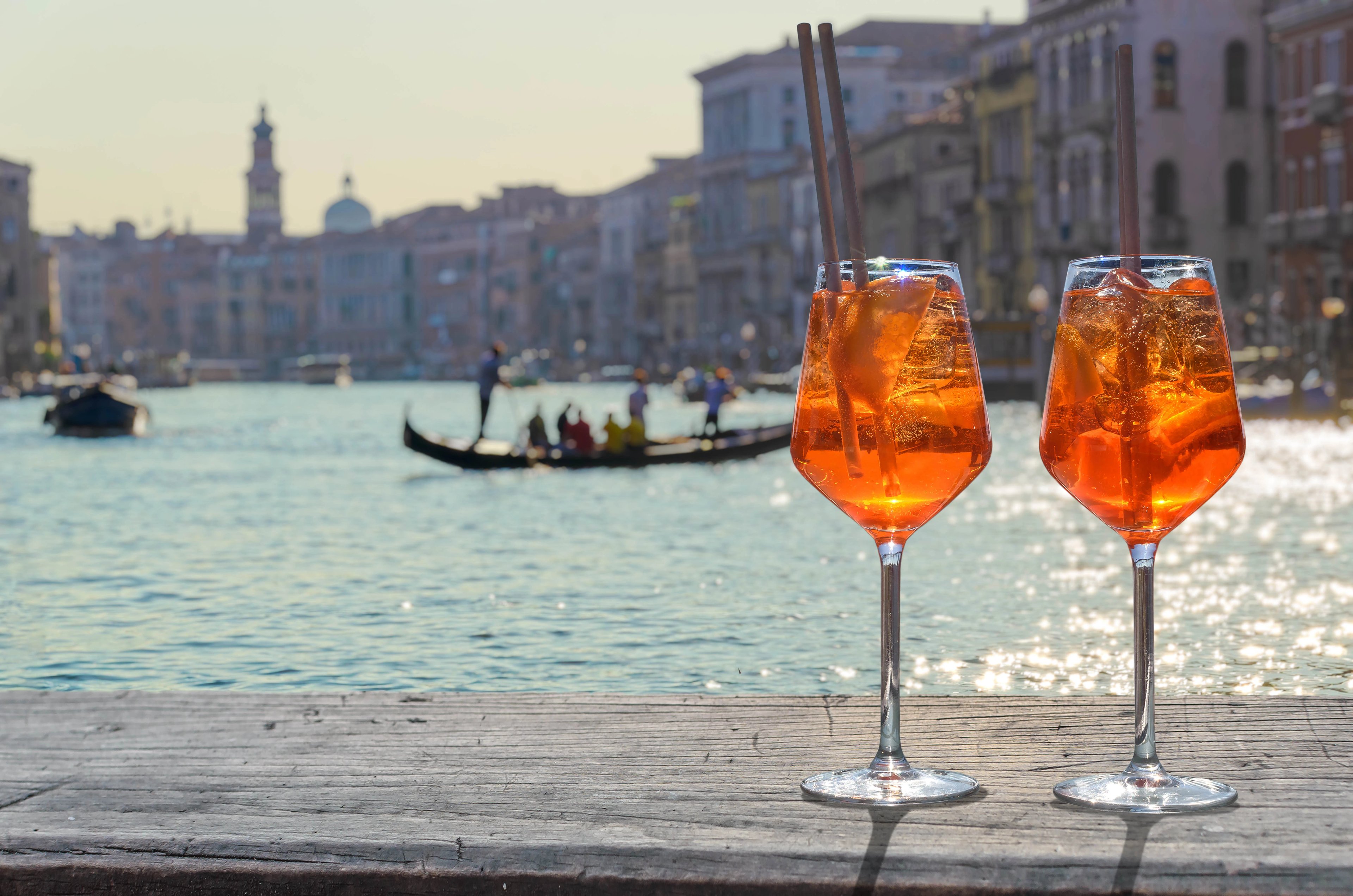
How Luggage Transfers Work
We arrange all luggage transfers, so you can focus on the ride without carrying extra weight.
Here’s how it works:
- Leave your luggage with reception by around 9:00 AM
- Our ground team transports it to your next hotel
- You’ll find your bags waiting for you at afternoon check-in
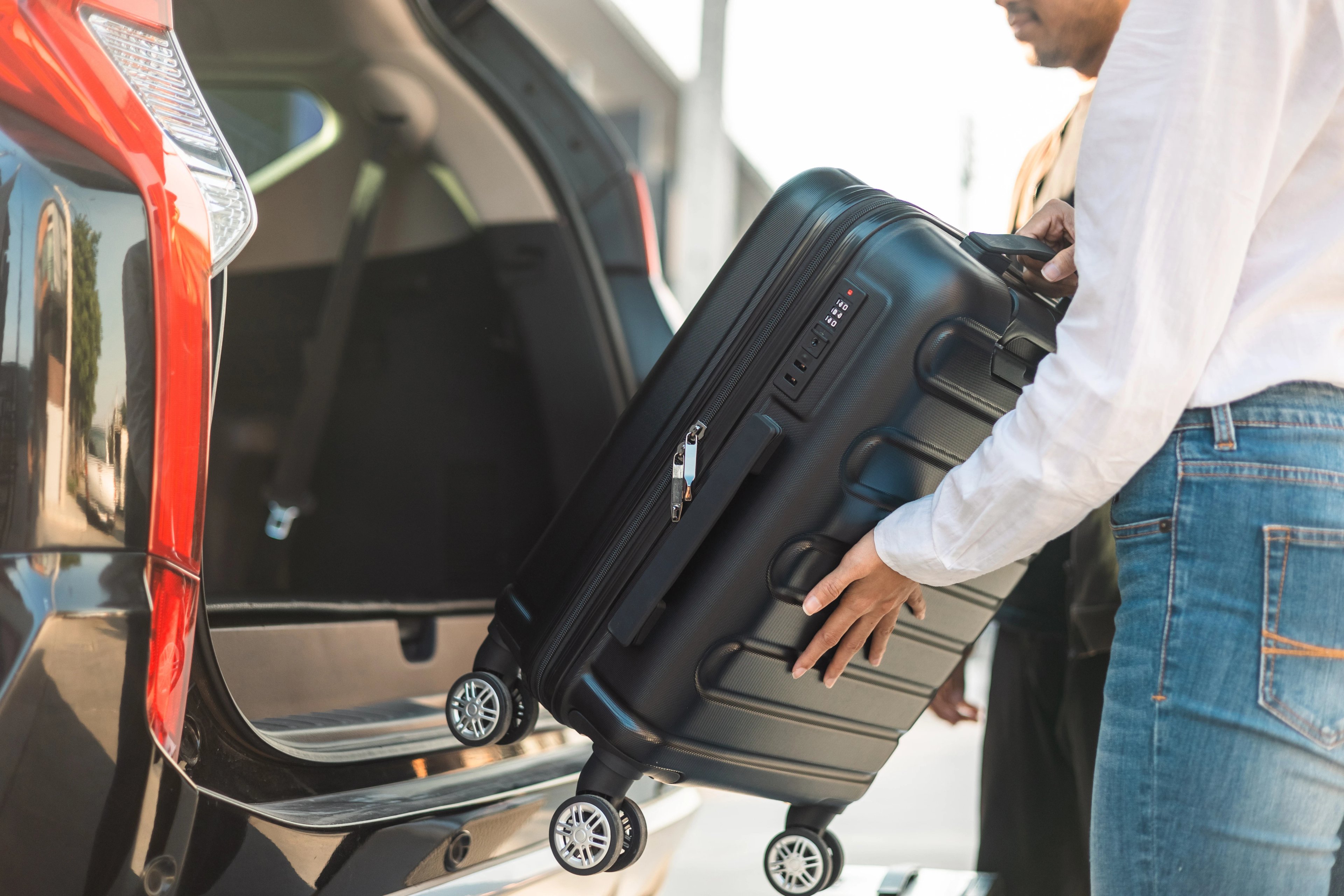
What If Something Goes Wrong
We’re here to support you. Here’s what to do:
- Mechanical issue (flat, gear problem, etc.): contact us and we’ll guide you or arrange local bike shop support
- Medical or emergency: call local emergency services (call 112; numbers will also be provided in your guidebook) and alert our team
- Need to stop early or skip a stage? We can coordinate a van pickup or alternative transfer
Cycling Rules & Road Etiquette in Italy
Riding safely in Italy is as much about respect and awareness as it is about following the law. Below is a practical summary of cycling rules every rider on a cycling tour in Italy should know:
Where You Can Ride
- Bicycles are considered vehicles and must follow the same traffic rules as motor vehicles.
- You're allowed to ride on public roads and secondary, low-traffic routes.
- Motorways and autostrade (high-speed expressways) are off-limits to cyclists.
Note: “Strada Statale” roads (national roads) are sometimes busy — routes usually avoid high-speed roads where possible.
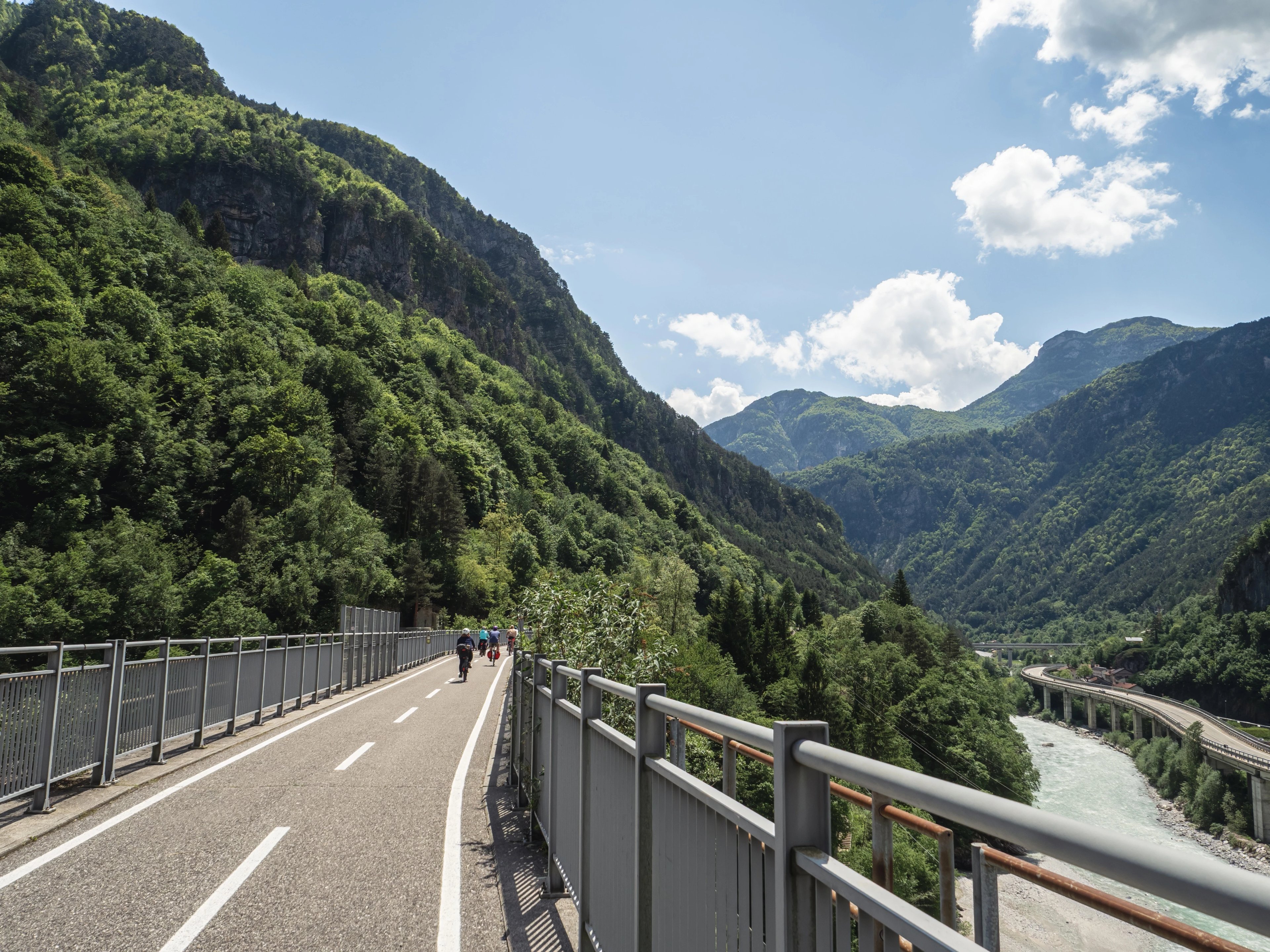
Riding Position & Signals
- Ride on the right-hand side and overtake on the left.
- Use clear hand signals for turning or changing lanes.
- In many parts of Italy, two-abreast riding is permitted when safe; in narrow or traffic-prone areas, ride single file.
Sidewalks & Pedestrian Zones
- Cycling on sidewalks is generally prohibited, except for children under 8 years old. Violations may incur fines.
- In pedestrian zones or “zona pedonale,” cycling may be restricted or banned; always check signage.
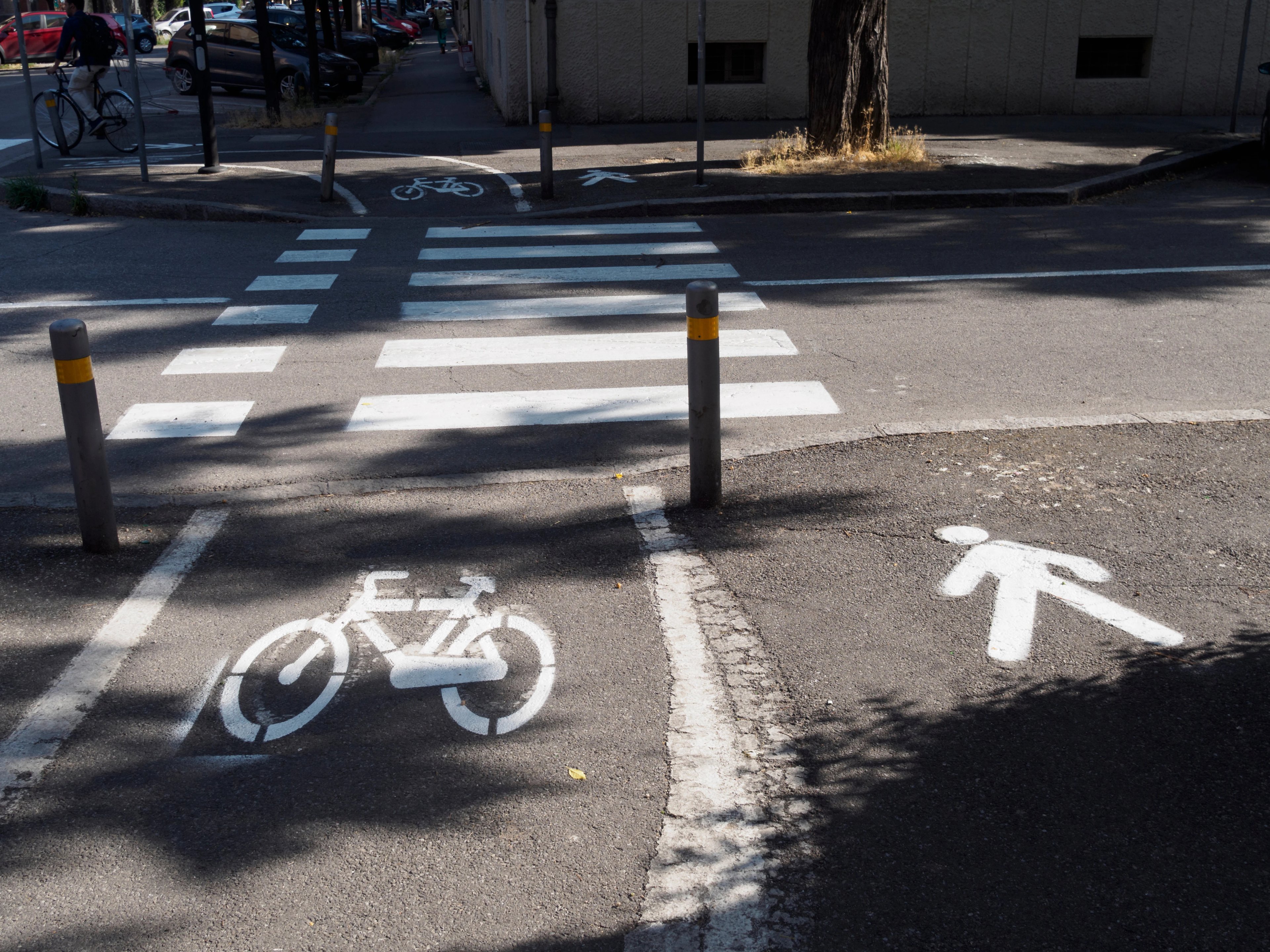
Helmet & Visibility
- Helmet use is strongly recommended, and in some municipalities, mandatory (especially for riders under 14).
- In tunnels or sections outside urban areas, a high-visibility vest or reflective gear is often required.
- At night or in low-light: white front light, red rear light, and reflectors are mandatory.
Mobile Phones, Audio & Alcohol
- Use of mobile phones (even hands-free) or headphones while cycling is generally not allowed.
- Cyclists are subject to Italy’s blood-alcohol law — riding under the influence may lead to fines or penalties.

Local Laws & Fines
Cities across Italy may enforce their own local cycling rules, especially in historic centers.
For example, Venice strictly limits cycling within the city’s pedestrian zones — in many areas, bicycles must be walked or left outside the core before entering. Similarly, other cities may prohibit cycling under covered arcades, through narrow piazzas, or around major monuments.
Some tourist-heavy zones (like Florence, Rome, and Siena) also have restricted-access areas (ZTLs) where only residents or permitted vehicles can enter.
Always check local signage and follow marked cycling paths to avoid fines.
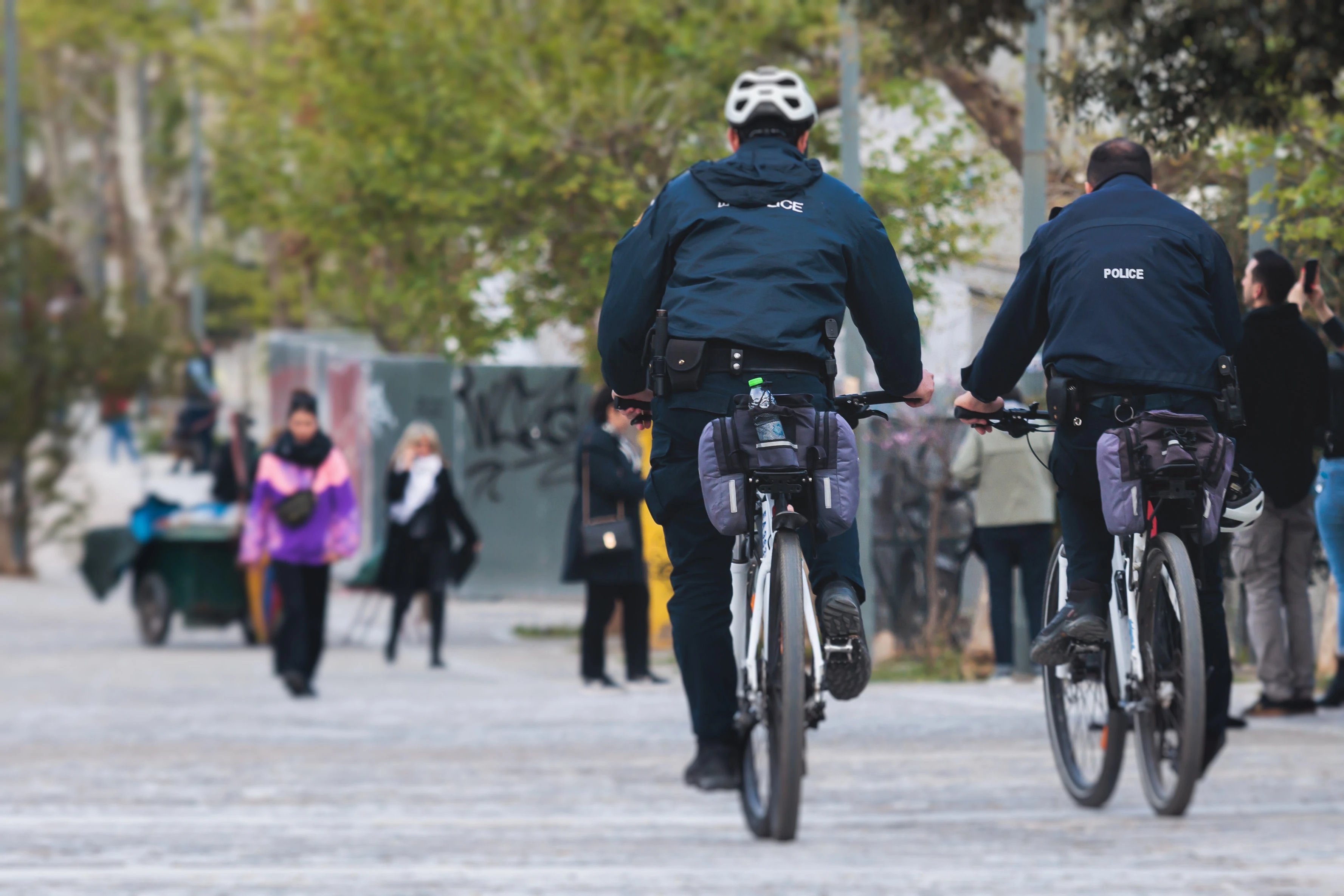
What to Pack for a Cycling Tour in Italy
Packing for a cycling holiday in Italy is simple when you know what to expect. Our digital guidebook includes a detailed checklist tailored to your chosen region, tour length, and season — whether you’re cycling the vineyards of Tuscany, the lakes of the north, or the coastal roads of Sicily.
Essentials you should bring on a cycling trip in Italy:
- Passport (valid for at least 3 months beyond trip end)
- Cycling kit: jerseys, padded shorts, gloves, lightweight jacket
- Off-bike clothing: casual clothes for dinners, walks, sightseeing
- Swimwear – for hotel pools, beaches, or thermal spas
- Comfortable shoes or sandals for walking days
- Helmet (often included with bike rental, but bring your own if preferred)
- Phone + charger + EU plug adapter (Type C or F)
- Power bank for long rides
- Sunglasses and sunscreen
- Reusable water bottle (or hydration pack)
- Credit/debit cards + some cash (euros)
- Spare inner tubes, tire levers, multi-tool
- Rain jacket, arm/leg warmers (mountain regions may need extra layers)
- Basic first-aid items (plasters, painkillers)
- Local SIM or roaming plan (optional, but helpful for navigation)
Cycling Events in Italy
Every year, Italy becomes a stage — not just for the pros, but for everyone who loves cycling. Whether you're lining the roads to shout support or timing your trip to ride nearby, these events bring energy, passion, and spectacle to the country’s landscapes.
The grandest of them all is the Giro d’Italia — but there are several others worth knowing, from Gran Fondos in the Dolomites to gravel classics in Tuscany.
Giro d’Italia
The Giro d’Italia is the highlight of Italy’s cycling calendar — one of the world’s three Grand Tours alongside the Tour de France and La Vuelta.
Every May, the race covers roughly 3,400 km over 21 stages, crossing the country from north to south and showcasing Italy’s most breathtaking landscapes: the snow-capped Dolomites, rolling Tuscan hills, and sunny southern coastlines.
When: May (3 weeks)
What: Professional stage race — part of cycling’s Grand Tours
Where: Varies yearly; usually starts in northern Italy and finishes in Rome or Milan

Being in Italy during the Giro is special. Entire towns decorate streets in pink — the color of the leader’s maglia rosa — and locals gather by the roadside to cheer, picnic, and celebrate.
While the Giro itself is reserved for professional athletes, you don’t need a racing license to experience the thrill of its legendary roads. Many of our road cycling tours in Italy follow sections of the same climbs and valleys featured in the Giro — giving you the chance to ride through those iconic switchbacks, feel the same challenge, and enjoy the same views that define cycling history:

Strade Bianche
Held in early March, the Strade Bianche is one of cycling’s youngest but most spectacular one-day races. Starting and finishing in Siena, it winds through Tuscany’s iconic white gravel roads — the strade bianche that give it its name. The route passes vineyards, olive groves, and medieval villages before finishing dramatically in Siena’s Piazza del Campo.
When: March
What: One-day race (plus Gran Fondo version for amateurs)
Where: Siena, Tuscany
For who: Fans of gravel cycling and those seeking an early-season race atmosphere
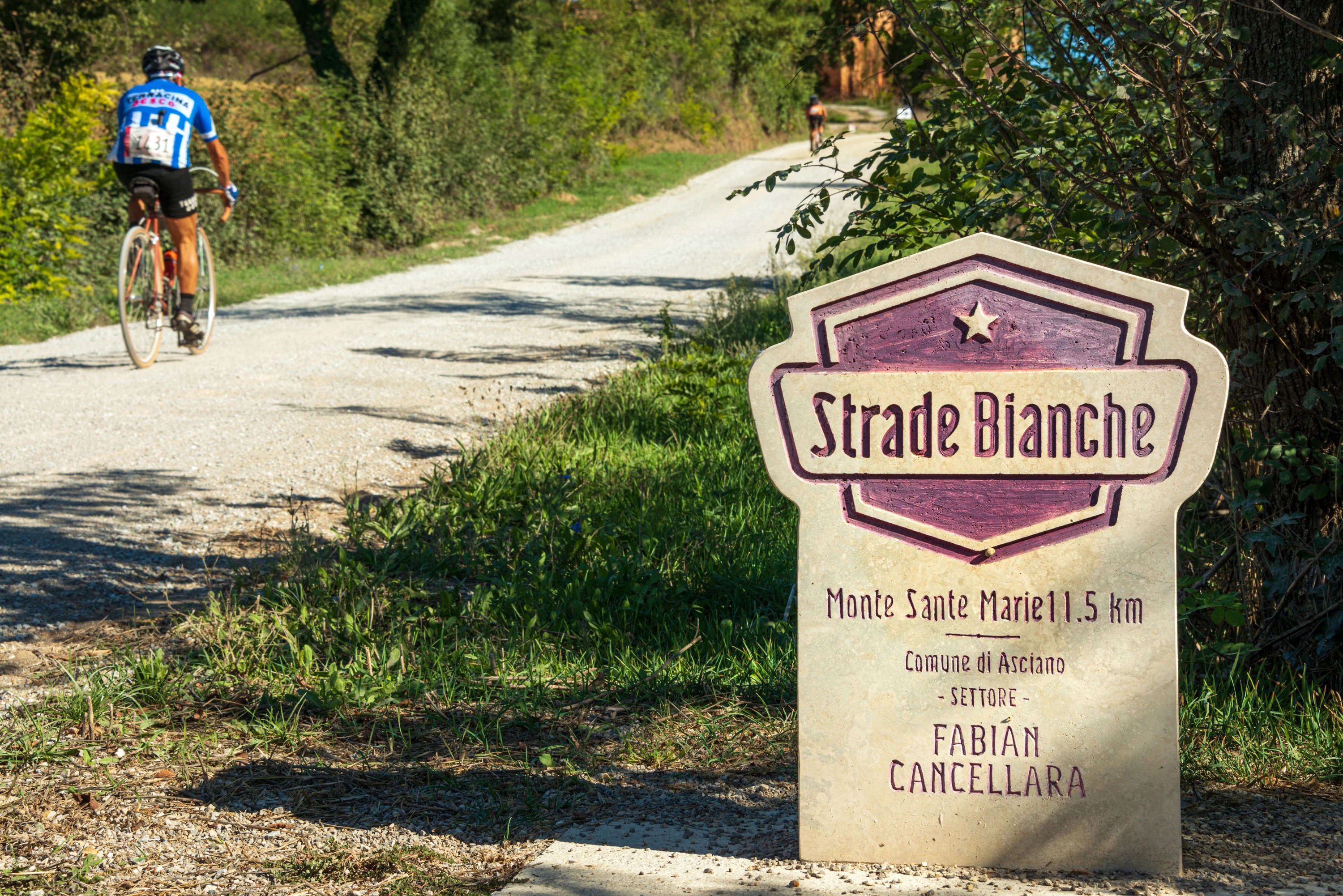
The combination of historic backdrop, rolling countryside, and unpredictable weather makes Strade Bianche a favorite among riders and fans. The amateur Gran Fondo Strade Bianche lets cyclists ride the same gravel roads as the pros — a true bucket-list experience.
Maratona dles Dolomites
If the Giro is Italy’s crown jewel, the Maratona dles Dolomites is its most beloved Gran Fondo. Each July, over 9,000 amateur cyclists take on a spectacular circuit through the Dolomites, tackling famous passes like Campolongo, Pordoi, Sella, and Gardena.
When: July
What: Gran Fondo (mass-participation amateur race)
Where: Alta Badia, Dolomites
For who: Intermediate to experienced cyclists

It’s challenging but perfectly organized — with feed zones, cheering locals, and mountain panoramas at every turn. Registration opens months in advance and sells out quickly, showing just how iconic this event has become. Want to join? We can make it happen!
If you prefer to cycle at your own pace, check out these cycling tours in the Dolomites. To make it easier to choose, these are our favorite ones:
Why Visit Italy During Cycling Season
Being in Italy during these events means being part of something bigger than sport. Streets fill with locals waving flags, bars broadcast live coverage, and conversations revolve around stage profiles and favorite riders.
If you plan your cycling holidays in Italy during this time, you’ll get to experience a country united by passion and the pure joy of life on two wheels.
Best Places to See in Italy
Italy is packed with must-see places — and the best part is that many of them lie right along the country’s top cycling routes.
With 61 UNESCO World Heritage Sites, Italy officially holds the world record for cultural and natural treasures.
You can cycle past Roman ruins, Renaissance cities, vineyards, and volcanic landscapes, often all within the same week. That’s what makes cycling tours in Italy so rewarding — every route doubles as a sightseeing route.
Below you’ll find a selection of must-see landmarks, featured during our cycling holidays in Italy:
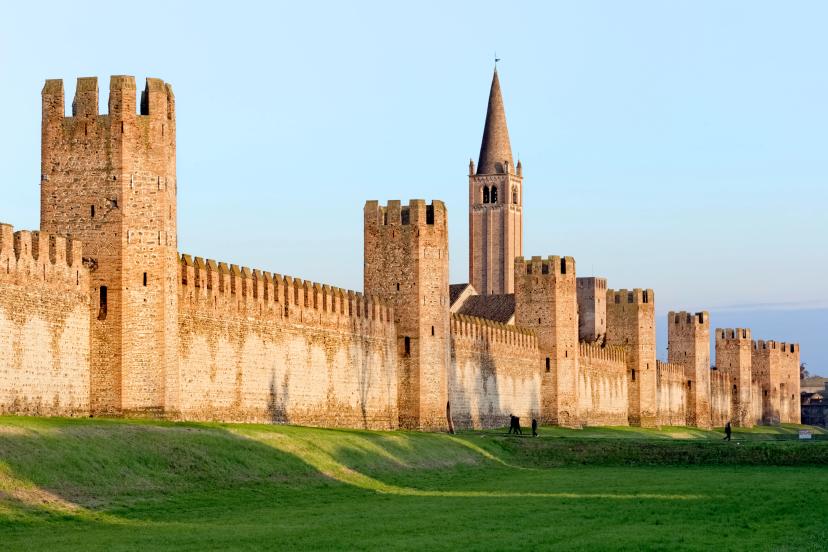
Montagnana
Montagnana is one of Europe’s best-preserved medieval walled towns, encircled by nearly two kilometers of perfectly intact 14th-century walls and 24 towers. Inside, cobbled streets lead to elegant palaces and lively squares that reflect centuries of prosperity. The massive defensive gates once guarded the borderlands of the medieval Carraresi lords of Padua.
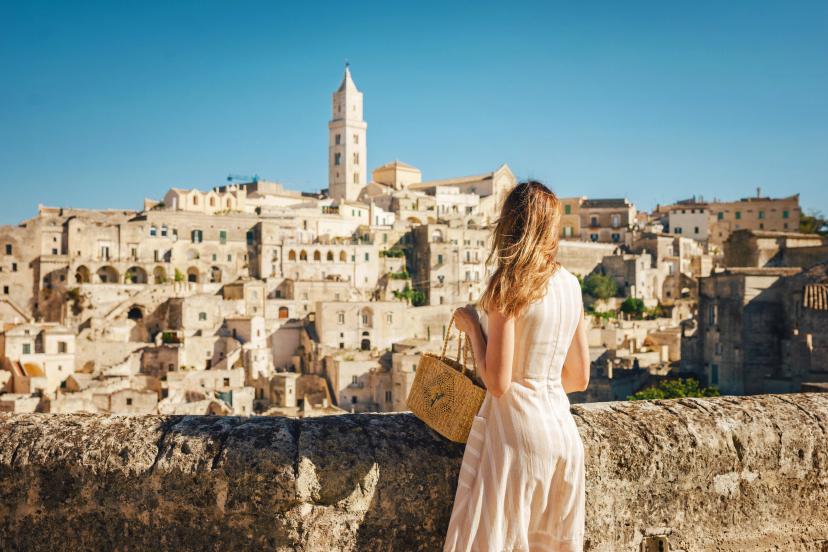
Matera
This UNESCO World Heritage Site and European Capital of Culture of 2019, is one of the world’s oldest continuously inhabited cities. Carved into the rock, its ancient Sassi cave dwellings form a labyrinth of homes, churches, and stairways that tumble down a ravine. Once a symbol of poverty, Matera has transformed into a cultural beacon — where boutique hotels and art galleries coexist with prehistoric history.

Forte di Fuentes
Built in 1603 under Spanish rule, Forte di Fuentes once defended the northern territories of the Duchy of Milan. Its strategic location near Colico allowed it to oversee the Adda River and the northern end of Lake Como. Though ruined, the fort’s bastions, ditches, and stone walls remain visible, offering insight into 17th-century military architecture. Today, it stands as an atmospheric historic site surrounded by meadows, linking past and present in the quiet foothills of the Alps.

Stelvio Pass
Rising to 2,757 meters, the Stelvio Pass is Italy’s highest paved mountain pass and one of the most iconic roads in Europe. Completed in 1825 by the Austro-Hungarian Empire, its serpentine switchbacks (48 on the northern side alone) wind dramatically through glaciers and cliffs.

Roman Theatre, Aosta
Built in the 1st century AD, the Roman Theatre of Aosta is one of the most striking remnants of Roman presence in the Alps. Its towering façade — once part of a structure seating up to 4,000 spectators — still dominates the city’s historic center. The theater hosted public performances and ceremonies, reflecting Aosta’s importance as a provincial capital.

Sella Ronda
The Sella Ronda is a circular route that loops around the monumental Sella Massif, crossing four legendary mountain passes — Sella, Pordoi, Campolongo, and Gardena. Each ascent reveals a new perspective of the Dolomites’ sculpted limestone towers and sweeping valleys, and truly encapsulates the essence of the Dolomites: beauty, challenge, and harmony with nature.

Balcone d’Italia
The “Balcony of Italy,” perched at 1,320 meters on Sighignola Mountain, offers one of the most spectacular panoramas in the Alps. From this vantage point on the Italian-Swiss border, visitors gaze over Lake Lugano, the distant Monte Rosa massif, and even the faint silhouette of Milan on clear days. The viewpoint perfectly captures the harmony between Italy’s soft landscapes and Switzerland’s dramatic peaks — a breathtaking outlook aptly deserving its name.

Lake Como
Lake Como, one of Italy’s most enchanting lakes, shimmers beneath the towering Alps in a deep glacial basin shaped like an inverted “Y.” Its shores are lined with cypress trees, elegant villas, and pastel-colored villages that seem to float between water and mountain. The lake has long captivated artists, writers, and aristocrats — from Pliny the Younger to George Clooney — drawn by its tranquil beauty and Mediterranean-meets-Alpine atmosphere.
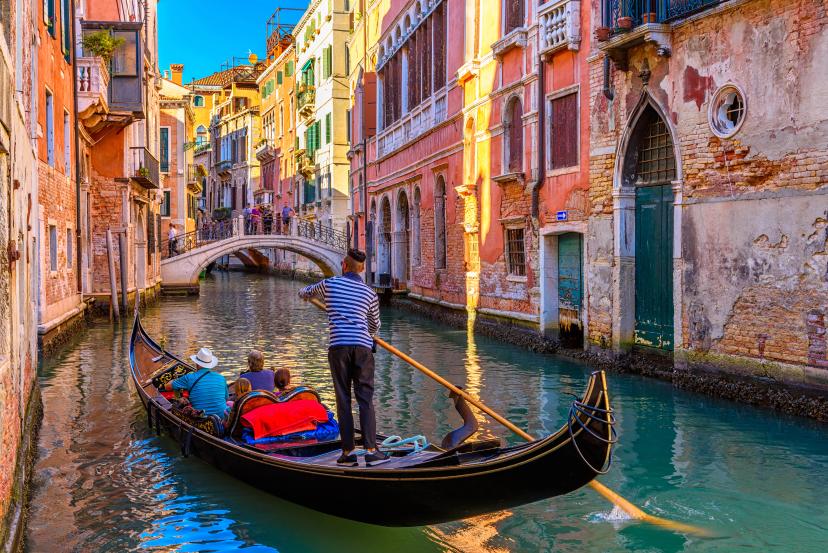
Venice Canals
The canals of Venice form the lifeblood of one of the world’s most extraordinary cities. Winding through a maze of over a hundred small islands, these shimmering waterways replace roads, carrying gondolas and vaporetti past marble palaces and hidden courtyards. The Grand Canal, lined with Gothic and Renaissance façades, tells the story of a city that once ruled the seas.

Miramare Castle
Perched above the Gulf of Trieste, Miramare Castle is a 19th-century neo-Gothic residence built for Archduke Ferdinand Maximilian of Austria and his wife Charlotte. The castle’s white stone façade contrasts strikingly with the deep blue sea below, while its lush gardens brim with exotic plants collected from around the world. Inside, lavishly preserved rooms tell the story of imperial elegance and tragic destiny. It remains one of Italy’s most graceful seaside palaces.

Teatro Antico di Taormina
Carved into the hillside with Mount Etna and the Ionian Sea as its backdrop, the ancient theater of Taormina is one of the most spectacular archaeological sites in the world. Built by the Greeks in the 3rd century BC and expanded by the Romans, it could seat over 5,000 spectators. Its semicircular form frames one of the most iconic views in Italy.
These are just a few highlights of what you can experience on two wheels — Italy’s list of remarkable places goes far beyond this.
Check out our extended list of bucket-list places you will visit during our cycling tours in Italy.
Italy’s Culinary Scene
Food is part of everyday life in Italy — and for cyclists, it’s one of the best parts of the journey. After a morning on the road, nothing beats a plate of handmade pasta, local cheese, or a glass of regional wine enjoyed in a small trattoria.
Italy isn’t known as “la terra del buon cibo” (the land of good food) for nothing. It’s home to:
- over 5,000 regional specialties,
- 1,000+ cheese varieties,
- and 24 UNESCO-recognized food traditions.
Cyclists quickly learn that mealtimes in Italy are a ritual — eaten slowly, with conversation and good wine. Breakfast is simple (usually coffee and a pastry), while lunch and dinner are the main events of the day, often stretching into multiple courses. Even small towns have family-run osterias where recipes haven’t changed in generations.

On our cycling holidays in Italy, food isn’t just fuel — it’s part of the experience.
Each region offers something different:
- Tuscany for Chianti wine and bistecca alla fiorentina
- Veneto for seafood and risotto
- Puglia for handmade orecchiette and fresh burrata
- Piedmont for truffles and Barolo wine
- Sicily for arancini, cannoli, and sweet citrus desserts
These regional specialties make every stop along your ride worth savoring. If you wish to combine your cycling trip with a culinary experience, this tour will be perfect for you:
When it comes to Italian cuisine, there’s far more to discover.
See our complete culinary guide to find must-try regional dishes, learn more about food traditions, and how they intertwine with culture.
Navigating Italian Culture for Cyclists
A cycling holiday in Italy isn’t just about roads and scenery — it’s also an opportunity to interact with everyday Italian life: customs, social norms, and small gestures that make a big difference in how locals receive you.
Pace & Daily Rhythm
Life in Italy has a rhythm that varies by region, but there are a few patterns worth knowing:
- In many towns, especially smaller or rural ones, you may find a midday break (riposo)—shops, cafés, and some services close between roughly 1:00 and 3:30 PM.
- Meals are social occasions. Lunch often begins around 12:30–2:00 PM, and dinner usually doesn’t start before 7:30–8:00 PM in many regions.
- Sunday is quiet. In many parts of Italy, Sunday is a rest day — markets shut, shops close, and traffic is lighter (great for a peaceful ride).
- Service in cafés and restaurants can feel more relaxed; it’s not laziness but part of the cultural pace. Patience and a friendly attitude go far.

Café & Coffee Culture
Coffee in Italy is serious business, and part of the experience — especially on a cycling day:
- Expect espresso to be short, strong, and consumed quickly (often standing at the bar).
- Many cafés double as meeting points — locals may spend time chatting over more than one cup.
- Tipping is not expected; rounding up the bill is appreciated, but don’t feel obligated.
- In small towns, cafés may close midday or have limited hours — especially outside peak season.
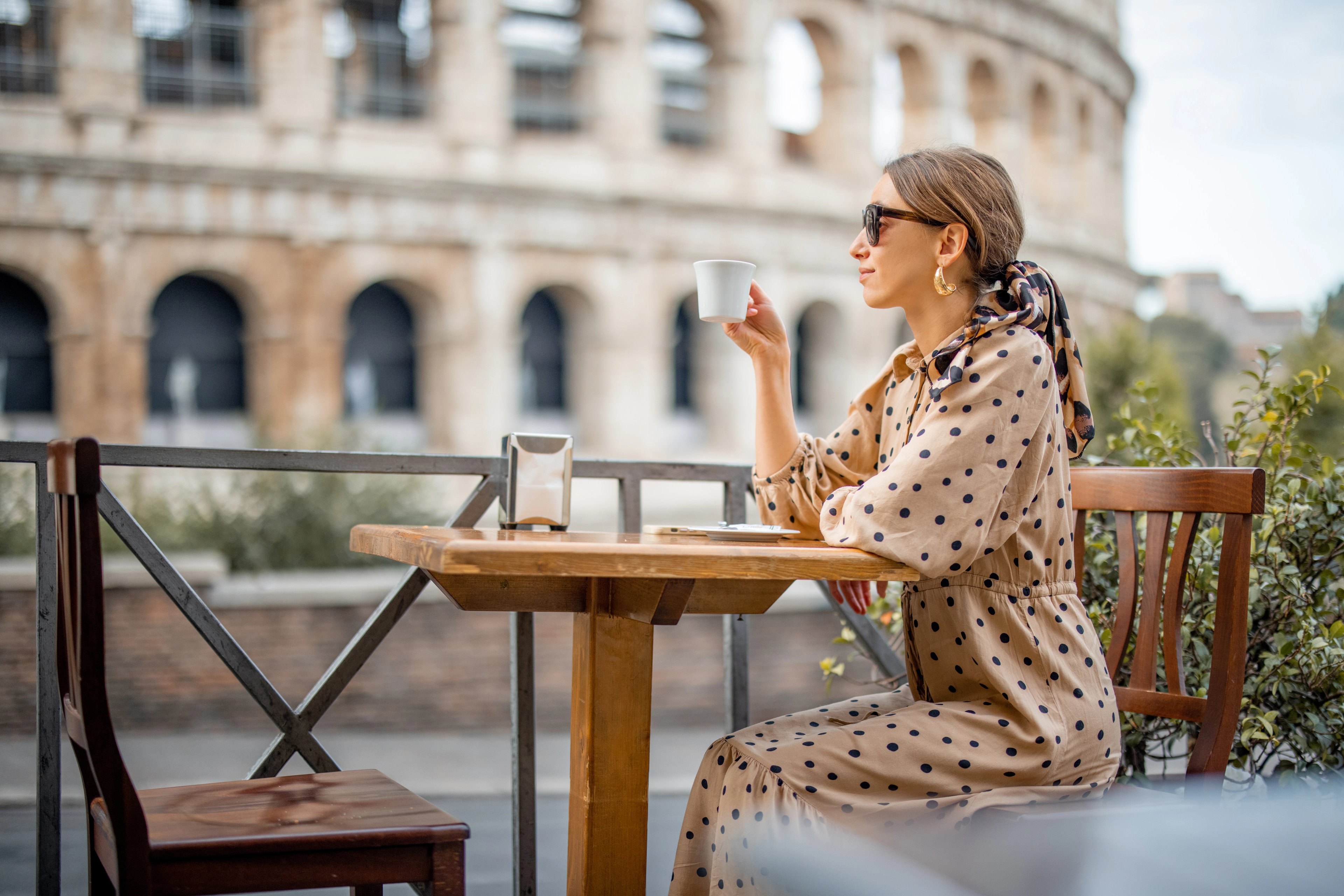
Cultural Norms, Etiquette & Social Cues
Understanding local customs will help you connect better with Italians:
- Greeting matters; Use “Buongiorno” (good morning) or “Buonasera” (good evening). Among friends, Italians use ciao, but reserve that for casual situations.
- Politeness is appreciated; Addressing someone with “Signore / Signora” (Mr. / Mrs.) unless invited to use first names is respectful.
- Table manners: ait until the host says “Buon appetito” before starting. Avoid placing elbows on the table.
- Dress matters; Italians tend to dress well. Even casual wear is usually clean and put together — avoid looking sloppy.
- Gift & hospitality: If you’re invited to someone’s home, bringing a small gift (wine, flowers) is polite.
- Avoid large, loud noises in public places; Italians may be animated, but boisterous behavior in more reserved settings can stand out.
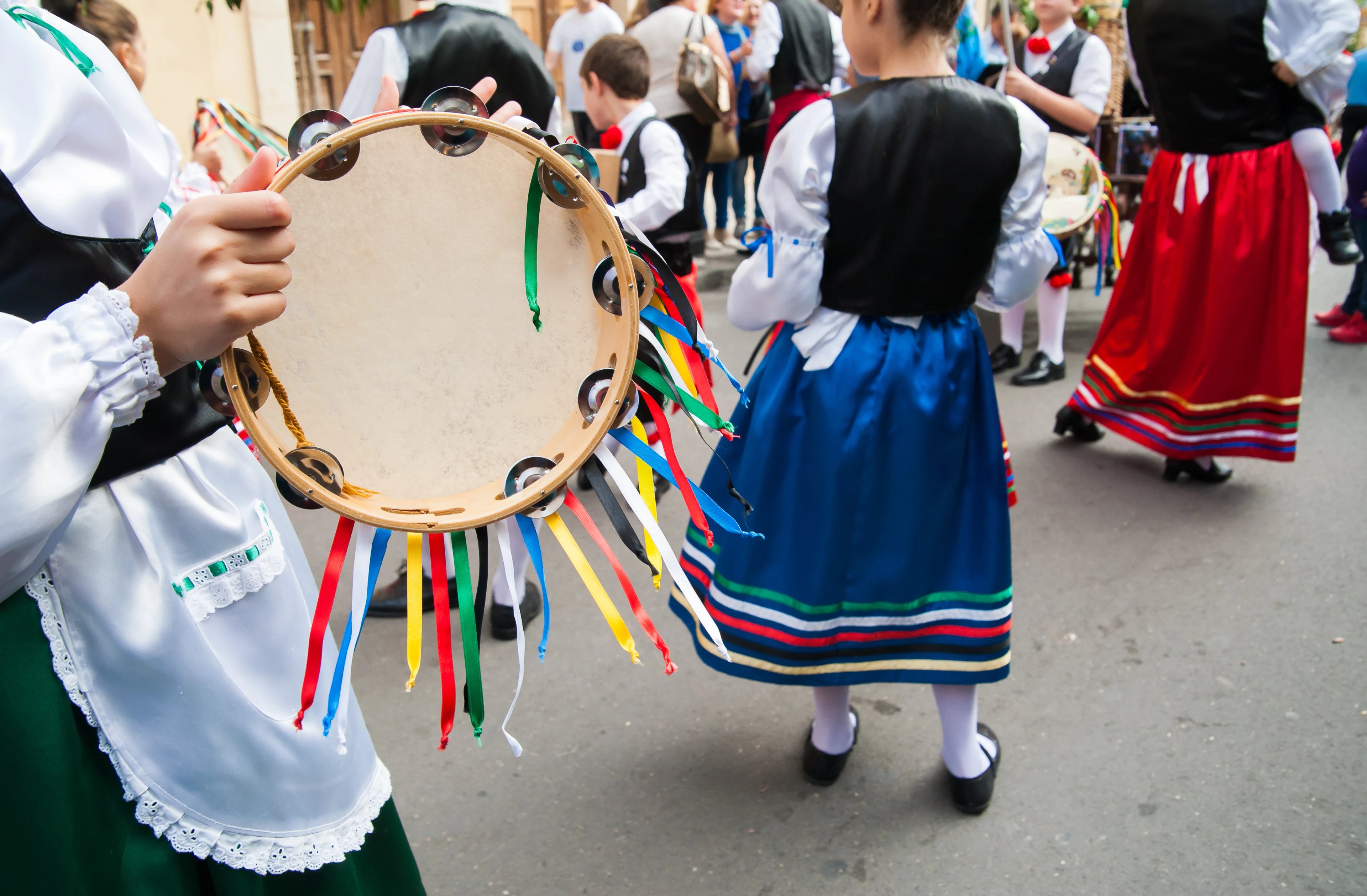
Expect the Unexpected (on the Road)
Riding through Italian landscapes occasionally involves surprises — and that’s part of the fun:
- You might pass small festivals, processions, or religious events in villages — locals gather, music plays, and roads may slow or stop temporarily.
- In rural areas, you could share the road with livestock or farm traffic — be cautious and patient.
- In historic centers, many narrow streets are pedestrian zones. Cyclists may need to dismount or navigate short walking stretches.
- Watch for ZTL (Zona a Traffico Limitato) signs in cities — restricted vehicle zones in places like Florence, Rome, Venice. Unauthorized entry can result in fines.

Language Tips & Useful Phrases
While many Italians in tourist areas speak English, using even a few Italian phrases shows respect and earns goodwill. Here are some to keep in your pocket.
Top 20 Italian Phrases for Your Trip
- Ciao (chow) – Hello / Hi
- Buongiorno (bwon-JOR-no) – Good morning
- Buonasera (bwon-ah-SEH-rah) – Good evening
- Arrivederci (ah-ree-veh-DER-chee) – Goodbye
- Per favore (pehr fah-VOH-reh) – Please
- Grazie (GRAH-tsyeh) – Thank you
- Prego (PREH-go) – You’re welcome
- Mi scusi (mee SKOO-zee) – Excuse me / Sorry
- Parla inglese? (PAR-lah een-GLEH-zeh?) – Do you speak English?
- Non parlo italiano (non PAR-loh ee-tah-LYAH-no) – I don’t speak Italian
- Può aiutarmi? (pwaw ah-yoo-TAR-mee?) – Can you help me?
- Dov’è…? (doh-VEH) – Where is…?
- Quanto costa? (KWAN-toh KO-stah) – How much does it cost?
- Bagno (BAHN-yoh) – Bathroom / Toilet
- Acqua (AHK-kwah) – Water
- Mi sono perso/a (mee SOH-no PEHR-soh/-sah) – I’m lost (male/female)
- Ho una gomma a terra (oh OO-nah GOHM-mah ah TEHR-rah) – I have a flat tire
- Può aiutarmi con la bicicletta? (pwaw ah-yoo-TAR-mee kohn lah bee-chee-KLEHT-tah?) – Can you help me with the bicycle?
- Dov’è il negozio di biciclette? (doh-VEH eel neh-GOH-tsyoh dee bee-chee-KLEHT-teh?) – Where is the bike shop?
- Ho fame / Ho sete (oh FAH-meh / oh SEH-teh) – I’m hungry / thirsty
- È stato un piacere (eh STAH-toh oon pyah-CHEH-reh) – It was a pleasure

Travel & Logistics for Cycling Italy
Visa & Entry Requirements
- Many visitors can enter Italy visa-free for up to 90 days for tourist purposes, as it is part of the Schengen Area.
- That 90-day allowance applies collectively across all Schengen countries, not just Italy.
- Your passport should generally be valid for at least three months beyond your intended departure date.
Note: From late 2025 onward, many non-EU travelers will need to apply for ETIAS, a new travel authorization for entry into the Schengen Area (including Italy).
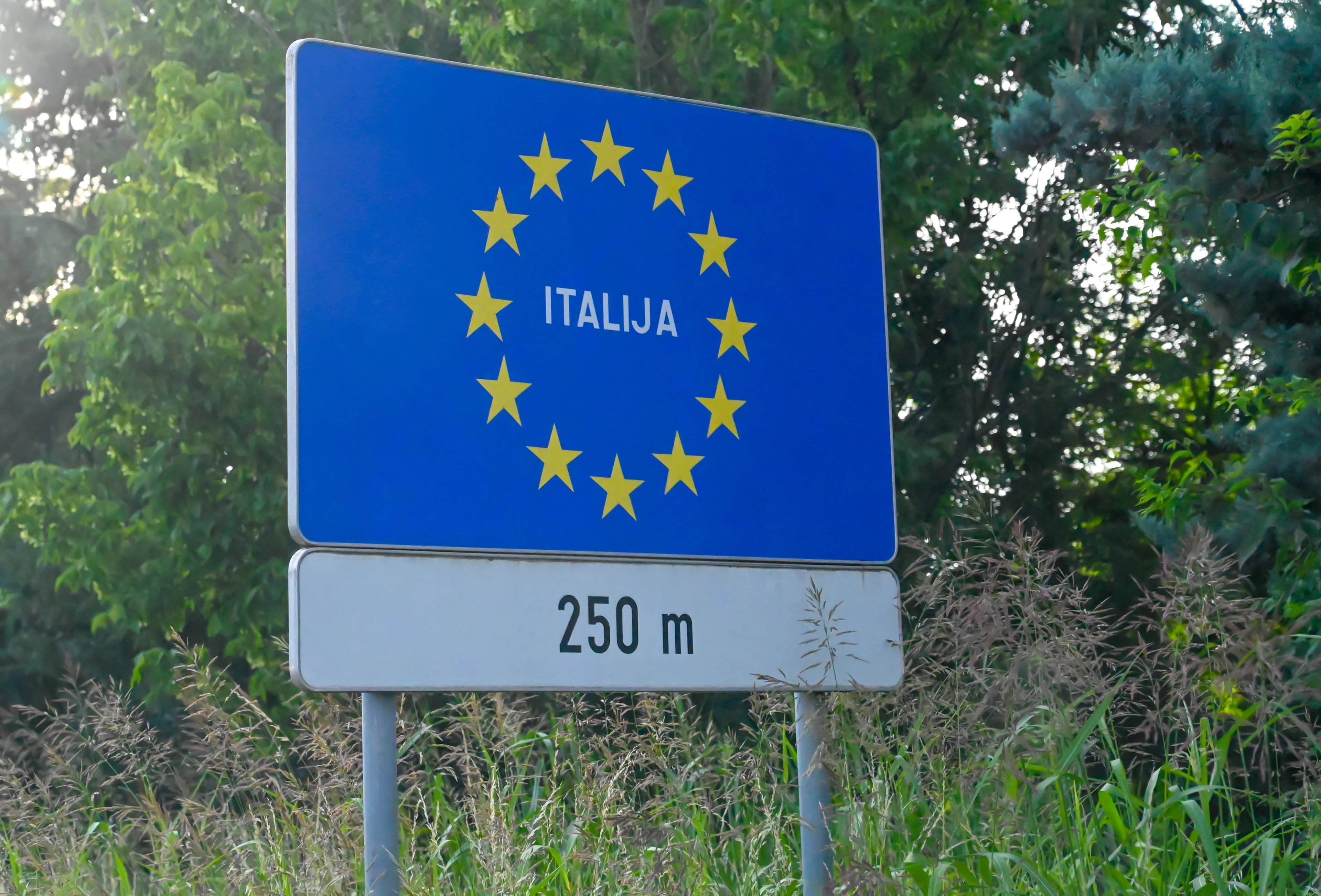
Major International Airports
Italy is well connected by international airports, making it easy to reach various regions for cycling tours:
- Rome Fiumicino (FCO) — the country’s busiest airport and a major hub for international flights.
- Milan Malpensa (MXP) and Milan Linate (LIN) — great gateways to Northern Italy, the Alps, and Lake Garda.
- Venice Marco Polo (VCE) — useful if your riding begins in the northeast or Veneto region.
- Florence Peretola (FLR) — ideal for central Italy and Tuscany tours
- Naples (NAP) — best for accessing southern Italy, Amalfi Coast, and nearby regions
- Catania (Sicily, CTA) and Palermo (PMO) — for island-based tours in Sicily
Flights to these airports come from all over Europe, and many have connections from North America and beyond depending on the season.
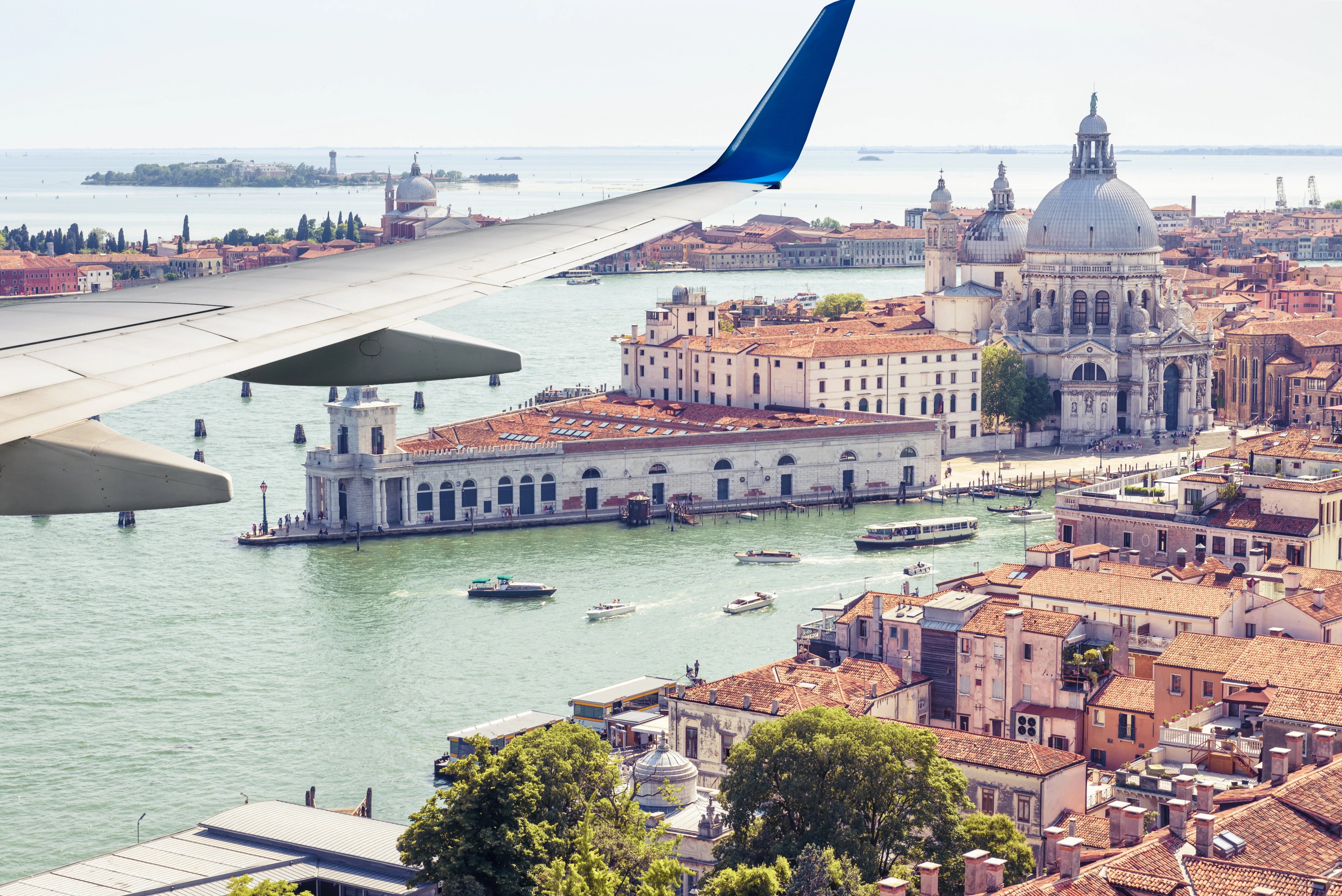
Public Transportation & Getting Around
Italy has a comprehensive and varied public transport system, which is very helpful for cyclists transitioning between regions or cities.
Trains
- High-speed trains (Frecciarossa, Italo) connect major cities like Milan, Rome, Florence, Naples — these are fast, comfortable, and often more efficient than driving.
- Regional and intercity lines allow access to smaller towns and cycling regions.
- Always validate your ticket (stamp it) before boarding regional or local trains — failure to do so can result in fines.
- Some trains allow bikes on board (sometimes with reservation); check in advance.
You can check and book the tickets on Trenitalia or Italotreno (high-speed trains)..
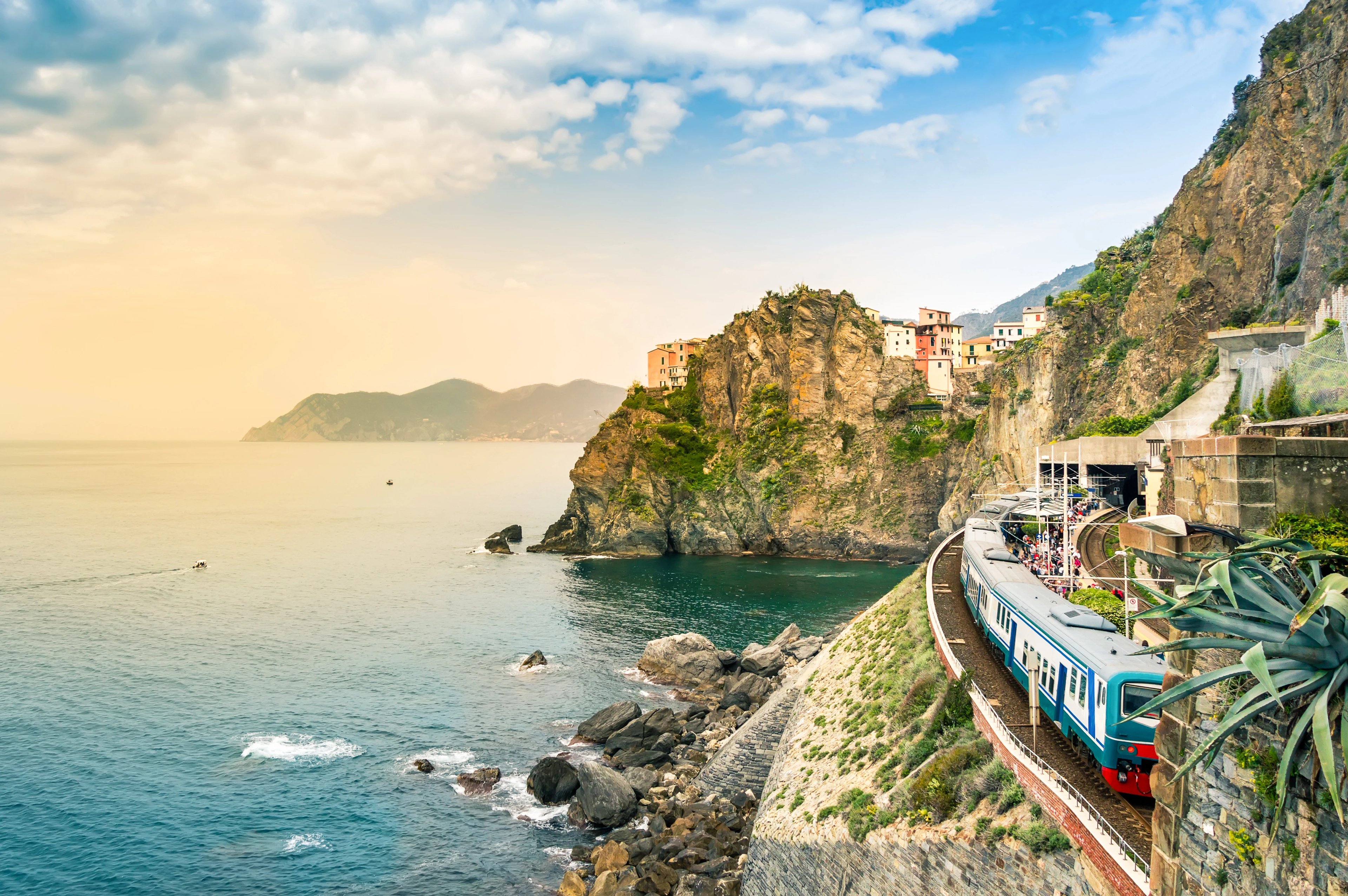
Buses, Trams, Metros
- Buses and trams are common in towns and cities; many accept contactless payment or local transport cards.
- Metro systems operate in cities like Rome, Milan, Naples, Turin.
- Tickets for buses, trams, and metros can usually be purchased at:
- Tabacchi shops (marked with a “T” sign)
- Newspaper kiosks
- Metro stations (ticket machines or counters)
- Official transport apps (e.g. ATAC for Rome, ATM Milano for Milan, GTT Torino for Turin)
- Some cities also allow contactless card or mobile payments directly at the turnstile or onboard validators.
Ferries & Boats
- Ferry connections are vital for reaching islands (Sicily, Sardinia) and coastal routes.
- In Venice, water transport (vaporetto) replaces traditional roads in many parts of the city.

Currency & Payments
- Italy uses the Euro (€) as its official currency.
- ATMs and bank services are widely available in cities and towns.
- Most hotels, cafés, and shops accept major credit and debit cards (Visa, MasterCard). However, in rural areas and small businesses, cash may still be preferred.
- When tipping, it’s not mandatory — rounding up or leaving 5–10% is appreciated for good service.

Emergency Numbers & Safety
In Italy, the universal emergency number is 112, which connects you to police, ambulance, and fire services.
Italy is generally considered safe for travelers and cyclists, but standard precautions apply:
- Keep valuables secure
- Be cautious in crowded public transport
- Use well-lit areas in the evening
- Carry basic first-aid and repair tools

Mobile Reception & Connectivity
Italy has good mobile coverage across most urban areas, coastal zones, and main roads. However, in remote mountain regions or very rural interior stretches, you may encounter weak or no signal.
It’s wise to download maps and GPX files offline before entering remote sections.
Mobile & SIM Info:
- eSIMs and prepaid SIM cards are widely available in airports, mobile shops, and kiosks.
- Major mobile networks (e.g., TIM, Vodafone, Wind Tre) offer broad coverage across Italy.
- In large cities and towns, free Wi-Fi is often available in cafés, hotels, and public areas.
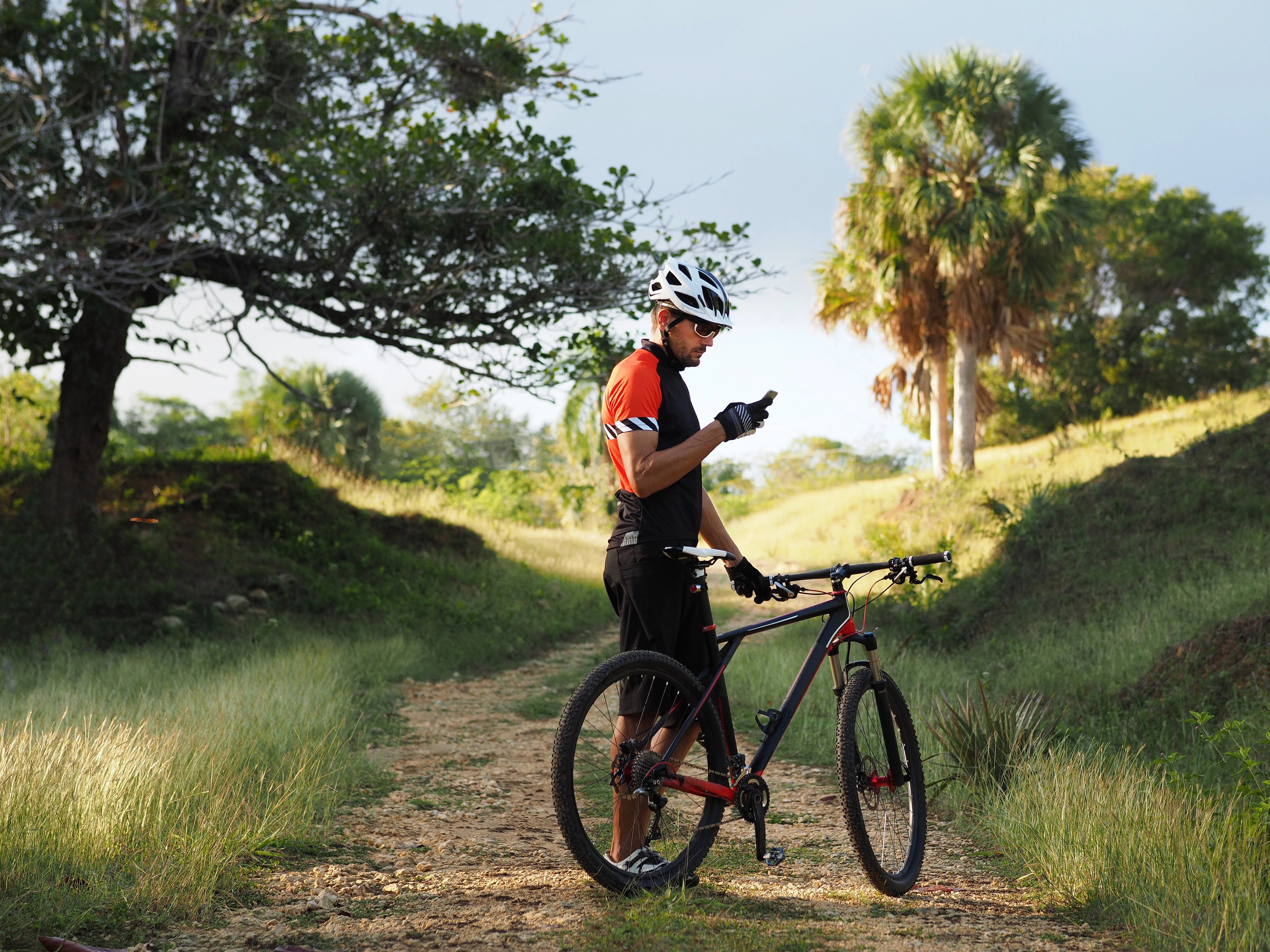
Cycle Italy with Confidence
When you book one of our cycling tours in Italy, everything is taken care of so you can focus on the ride. Each trip includes a detailed digital guidebook with your itinerary, local recommendations, and all the practical info you need to travel worry-free.
Every tour includes:
- Step-by-step digital guidebook and GPS navigation
- Full tour planning and organization
- Daily luggage transfers between hotels
- Support whenever you need it
Not sure which route suits you best? Get in touch with our team — we’ll help you find the perfect self-guided or guided cycling holiday in Italy, matched to your pace, interests, and travel style.

Hassle-Free
We handle itineraries, accommodations, and anything else you prefer not to deal with, so you can enjoy a carefree holiday.

Completely Customizable
Flexibility is our middle name — whether you want more or less, or just beyond ordinary, we’ll make it happen.

Book with confidence
We are a financially protected company, fully bonded and insured, keeping your money safe and allowing you to travel with confidence.

Unbeatable support
Our 24/7 customer support is where we show our passion, bringing you a better experience by making your well-being our number one priority.




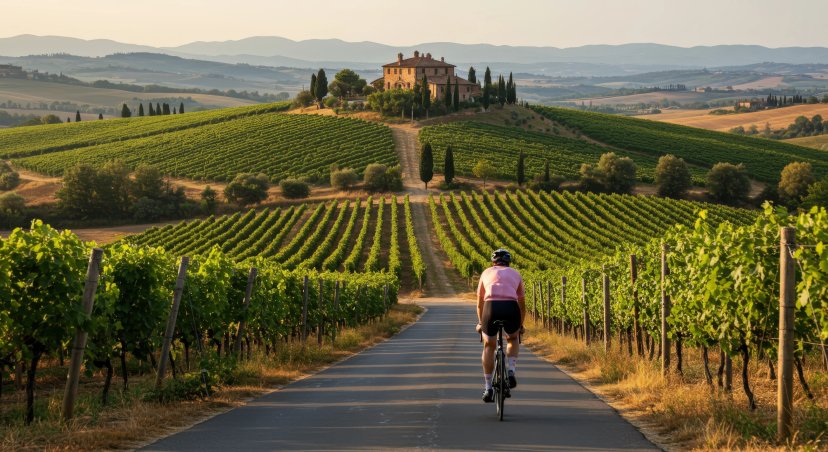


.jpg&w=3840&q=75)
